Fukuoka was to be our next destination in Japan. I have to admit here, we couldn’t stop juvenile smirks every time we uttered the word, and couldn’t resist pronouncing it with a ‘v’ at the end instead of a ‘k’. We left Miyanoura on May 1st – in the rain.
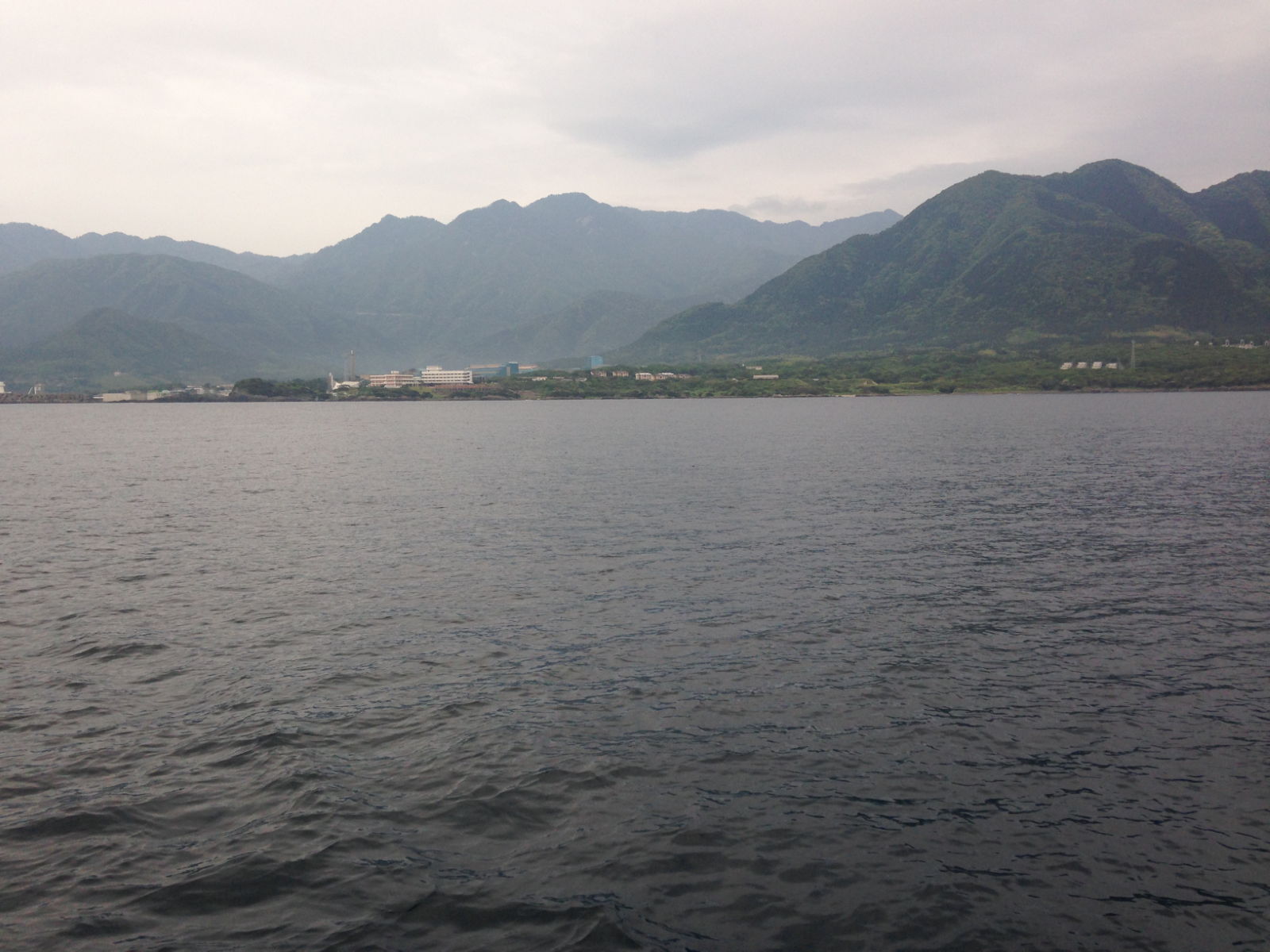
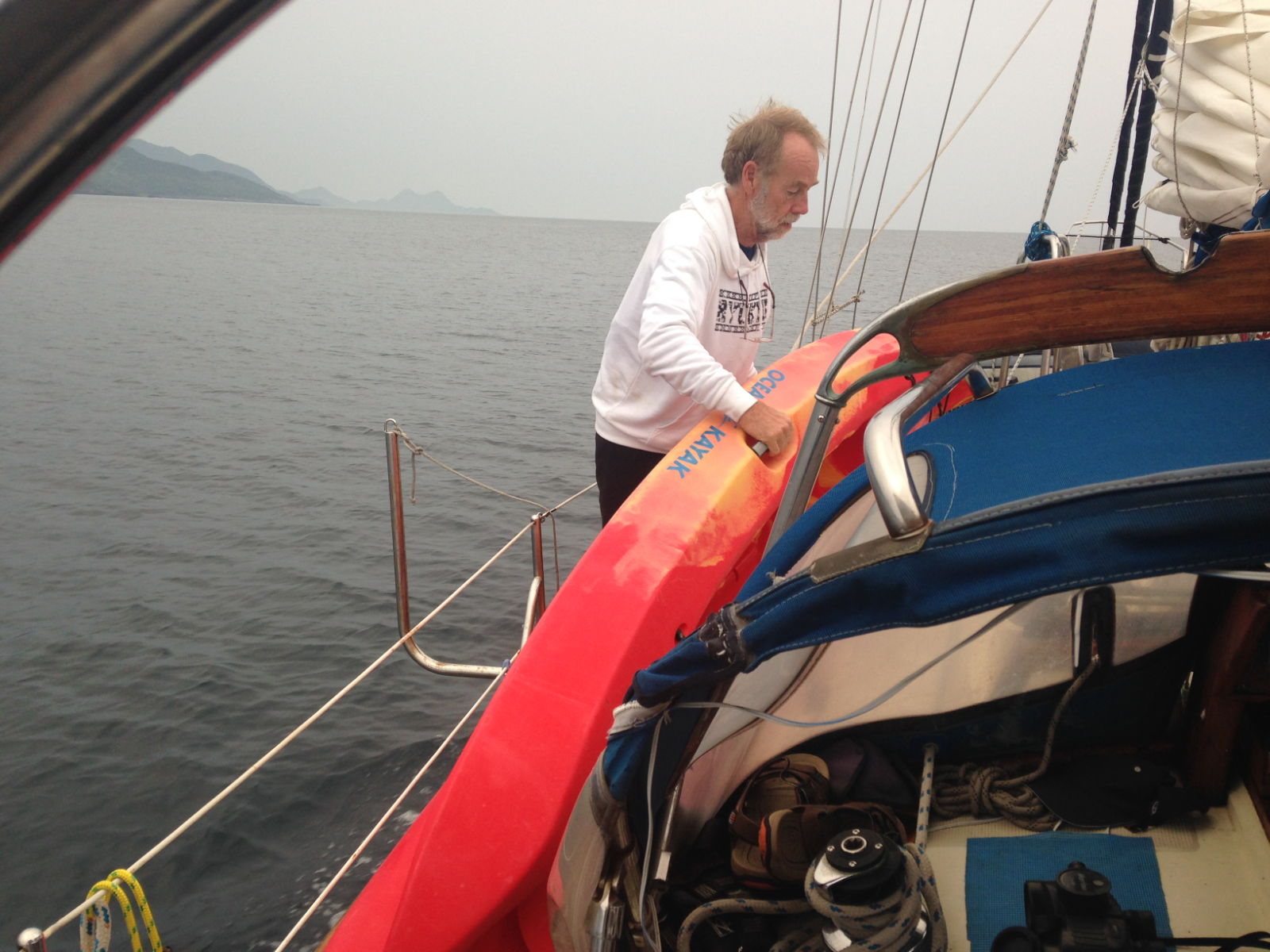
It rained all day, and visibility was poor but we had the sails up and made an average speed of 5 knots. It was too wet and cold to be in the cockpit for long (for me) but I made an exception to look at some dolphins! These were the first we’d seen in Asia and were a wonderful sight. Knowing how intelligent they are I wondered later if they’d appeared to warn us of the conditions to come. We didn’t get a storm as such; maybe ‘heavy weather’ is a more apt description. Paul put reefs in the main and the spinnaker pole in place in readiness for the wind that was forecast through gribs via the satphone. It sounded and felt very strong when it arrived and the accompanying high waves had the bow bashing down onto the water creating alarming hammer blows on the hull again. Watches were abandoned as heavy rain and wind gusting 20 knots continued throughout the night – we used Paul’s alarm to do regular checks above and relied on our trusty equipment as a third crew member.

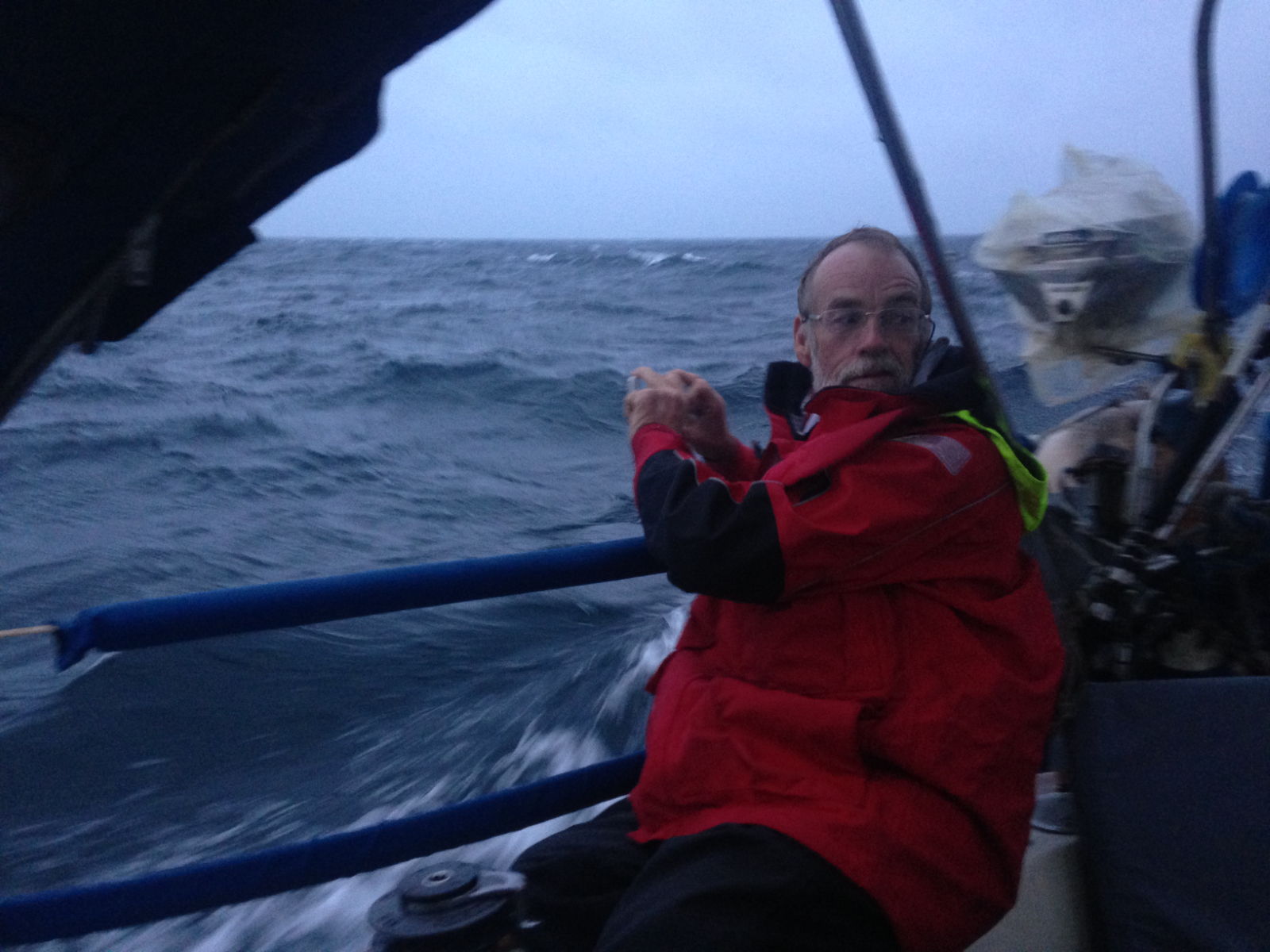
The rough weather, poor visibility and high waves persisted the following day as we progressed up the western coast close to Nagasaki. At one point during a watch around 4pm I looked out and it was like a dome of milky white muslin had been placed over us; I could only see a few feet ahead and hoped fervently that no fishing boats were close by (they came later).

The wind increased through the second night and Paul worked hard on the sails to keep us balanced, getting soaking wet in the process. He had a hard night’s slog actually. We were approaching Fukuoka Marina in the early hours of the morning of May 3rd and I could hear the noise of the wind whistling, rattling and banging things above. The rain had finally stopped but damp clothes and slippery surfaces made it uncomfortable up there. Protruding rocks, fishing boats and ferries had to be avoided at the same time as keeping the course and rolling from side to side. The mainsail had crash gibed and he’d had to sort out a tangled headsail and change the spinnaker pole to the other side all while I was sleeping peacefully below.

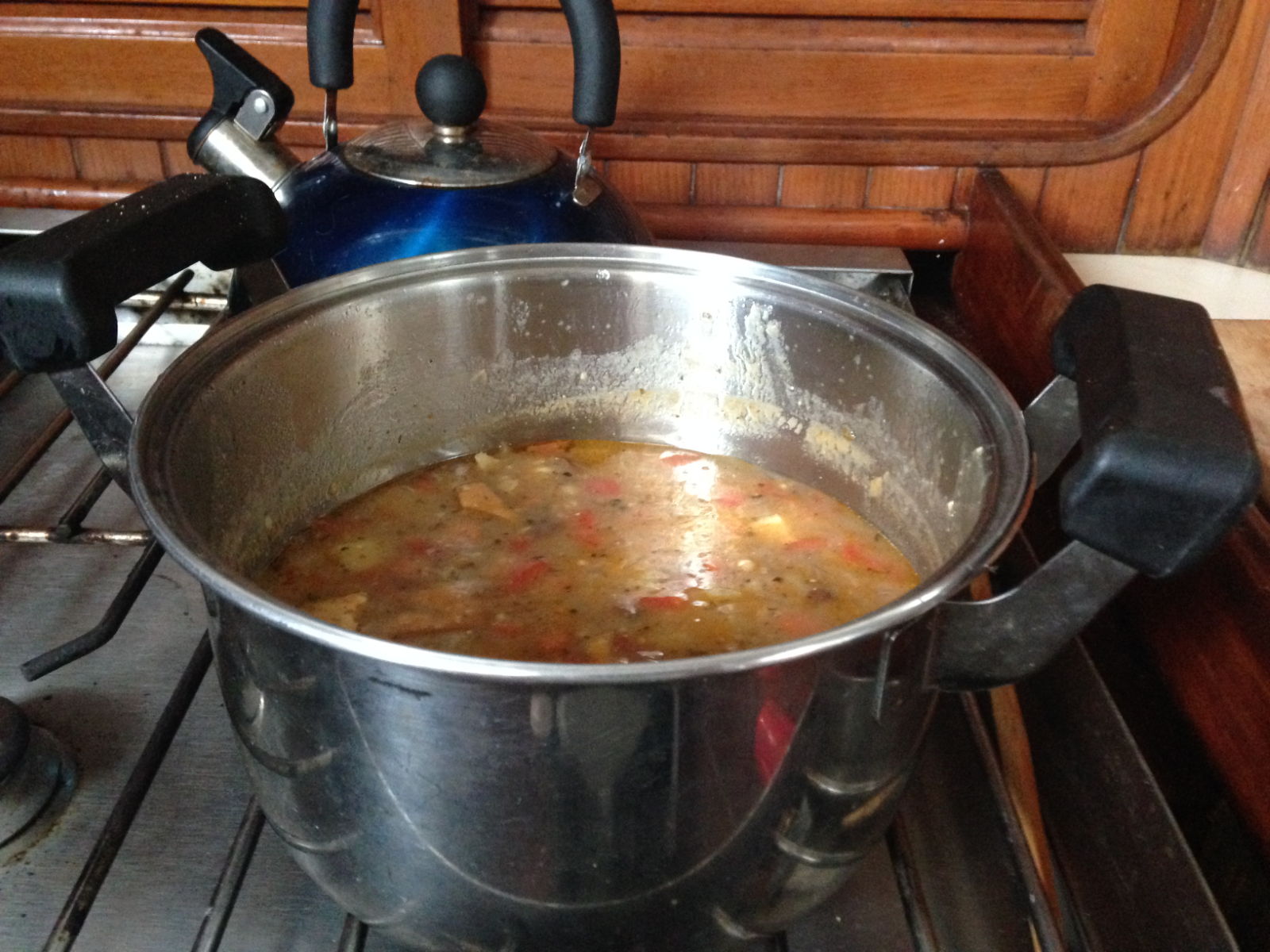
When I went up to steer us into the wind so Paul could take the main down, the wind was still gusting 20 knots and the prospect of steering into a marina in the dark in those conditions terrified me. The huge city of Fukuoka lay before us with lighted buildings and all kinds of flashing lights which made it tricky to pick out the red and green of the marina entrance. As it got shallower, waves were breaking on the surface and in the pre-dawn light created the effect that water was rushing at us like downhill rapids. I had to steer us around while Paul got the fenders and lines ready. At this point I noticed marker buoys bobbing around next to us and panicked about nets getting caught in the prop.
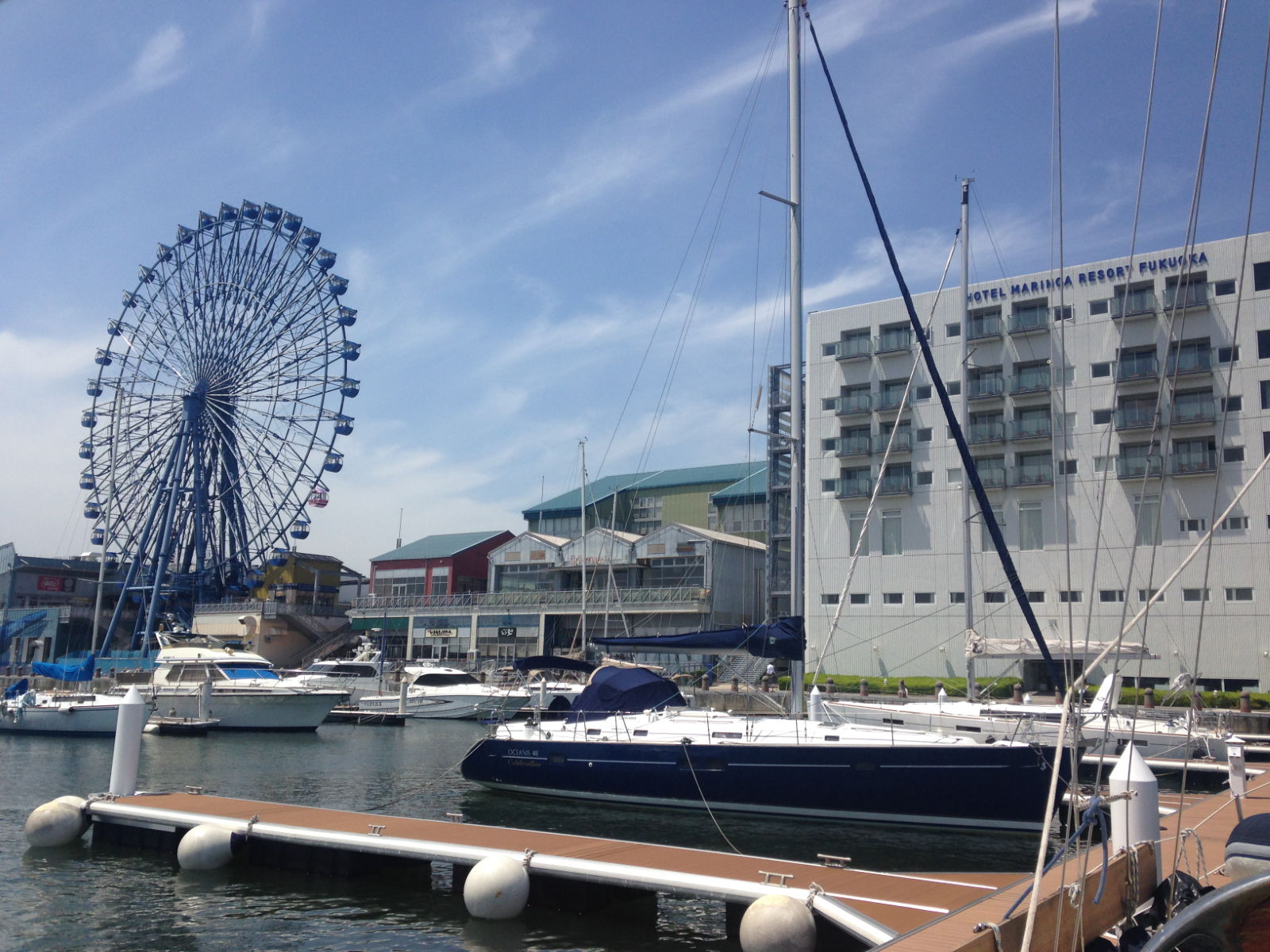
Needless to say it was a relief to enter the shelter of the harbour and leave behind the strong wind and swollen and billowy sea-state. Now we just had to find a berth. No one was around and we circled around a bit to check for available places. I shone a torch onto a likely-looking pontoon while Paul expertly guided us in. At 4 30am, I was euphoric to be safely berthed and celebrated with a whisky before going to bed. We moved to a new berth later that day after had Paul checked us in.

In the light of day we could see the area we’d been motoring around in was full of marker buoys, not the few I’d guessed might be around. Paul thought they were probably lobster pots anyway so the lines went straight down instead of across. We also saw the huge ferris wheel that dominates the landscape and serves as useful marker for getting your bearings. A large outlet mall is situated next to the ‘Marinio’ complex and is as popular as any retail outlet on a public holiday (it was Golden Week there, similar to a whole week of bank holidays). We had a look around it because Paul needed new footwear after the wet passage revealed the unsuitability of his shoes. After that we walked to a supermarket and passed a soulless housing estate and a massive golf practice arena; its towering safety nets were billowing in the wind. It looked eerie on the way back lit up as it was, revealing the golfers inside and loads of white balls littering the ground.
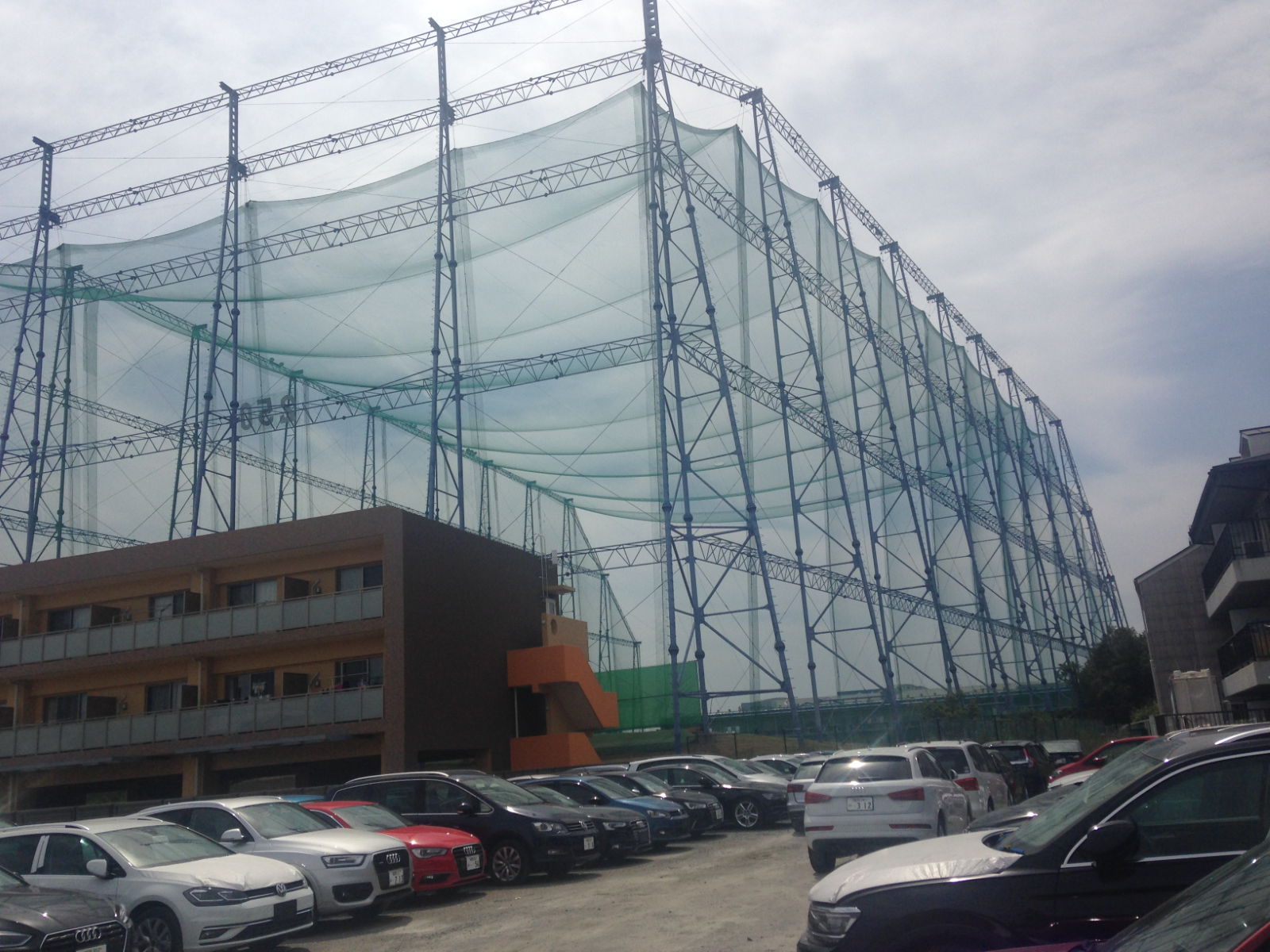
We did a three mile walk around the town and its outskirts during our stay, which began with a somewhat incongruous view of a replica of Notre Dame Cathedral near the marina, and ended on the beach area on the other side of a bridge over one of the many rivers that run through Fukuoka.Pics below are from the long walk.

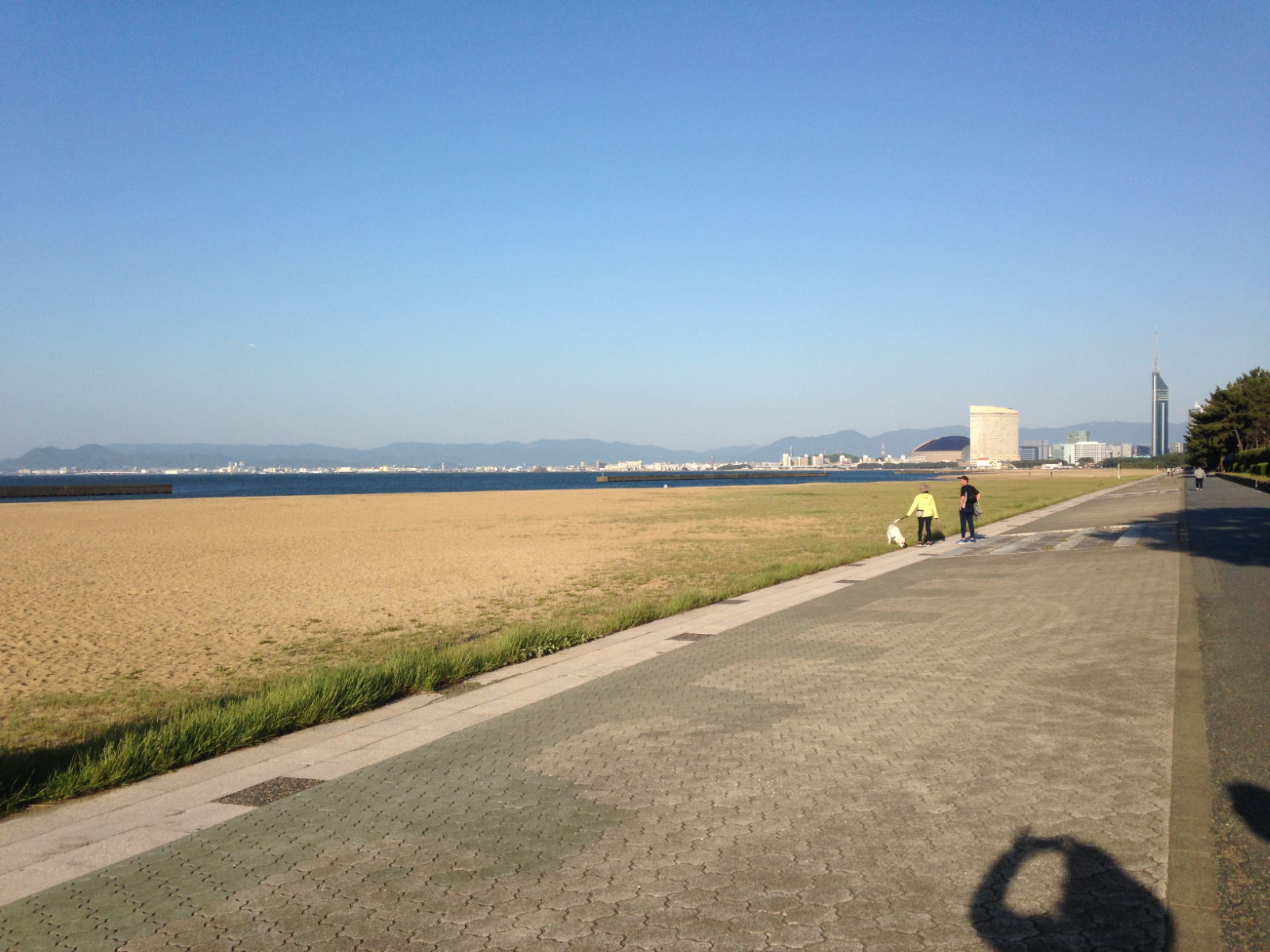


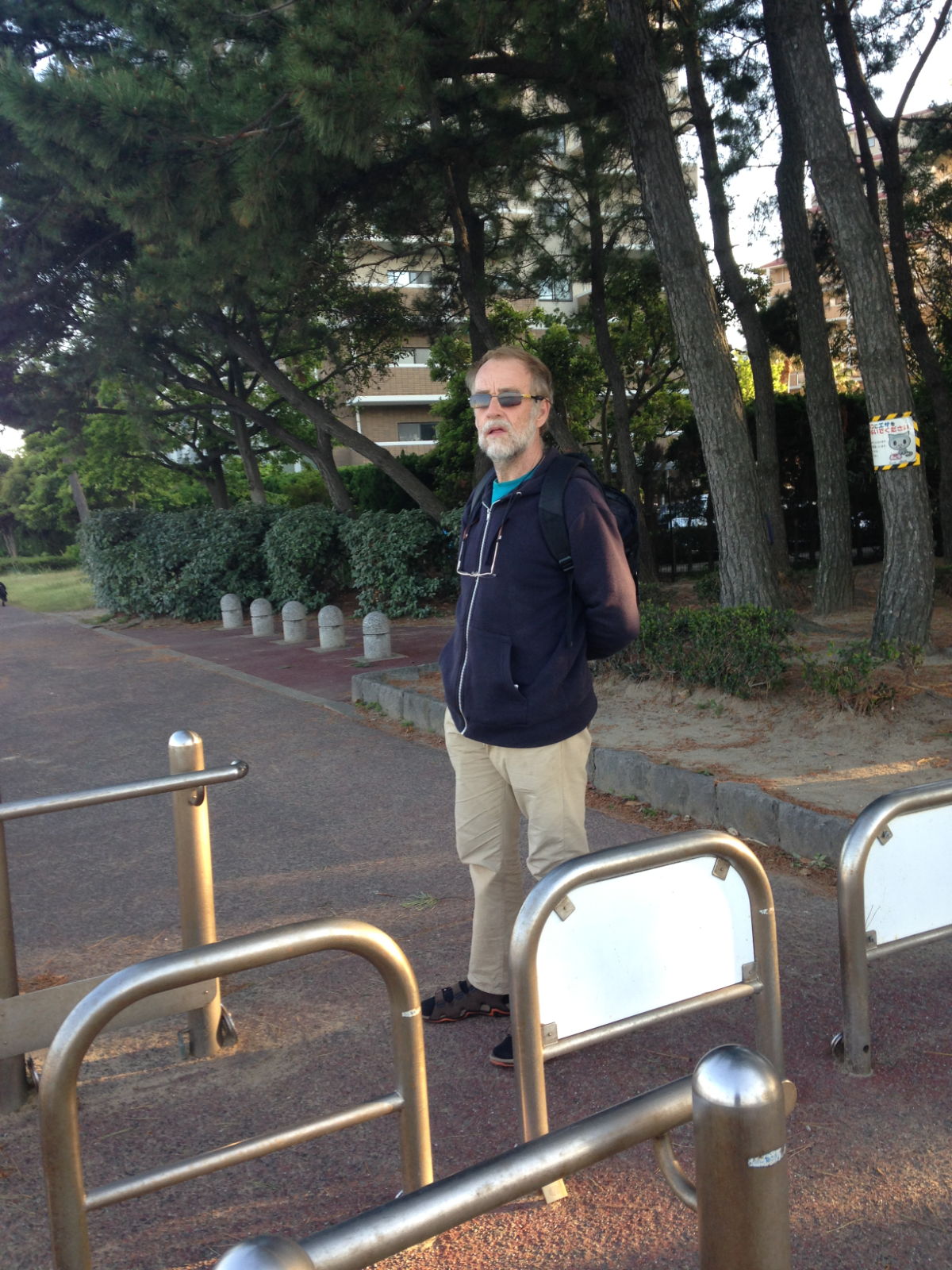
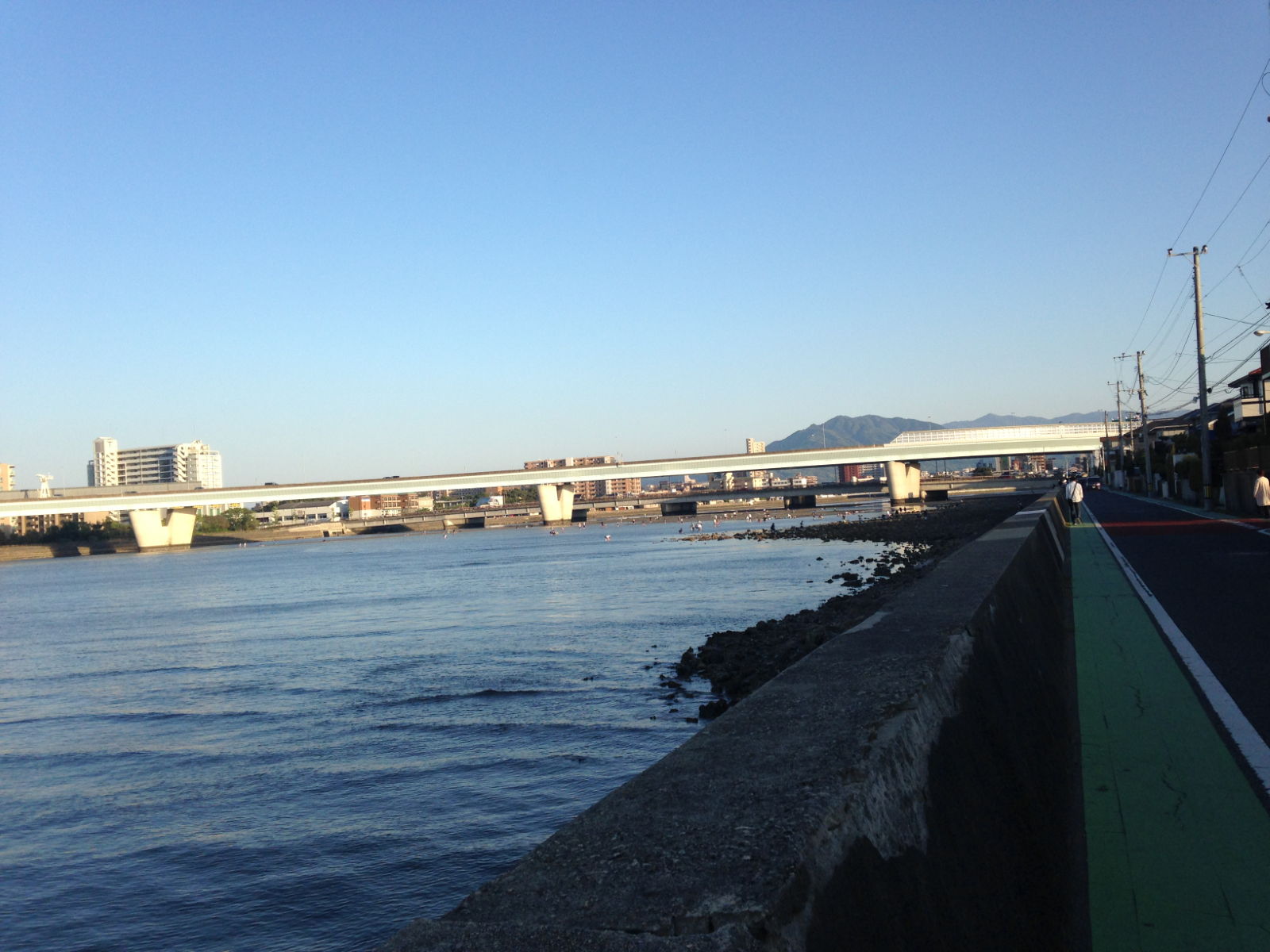
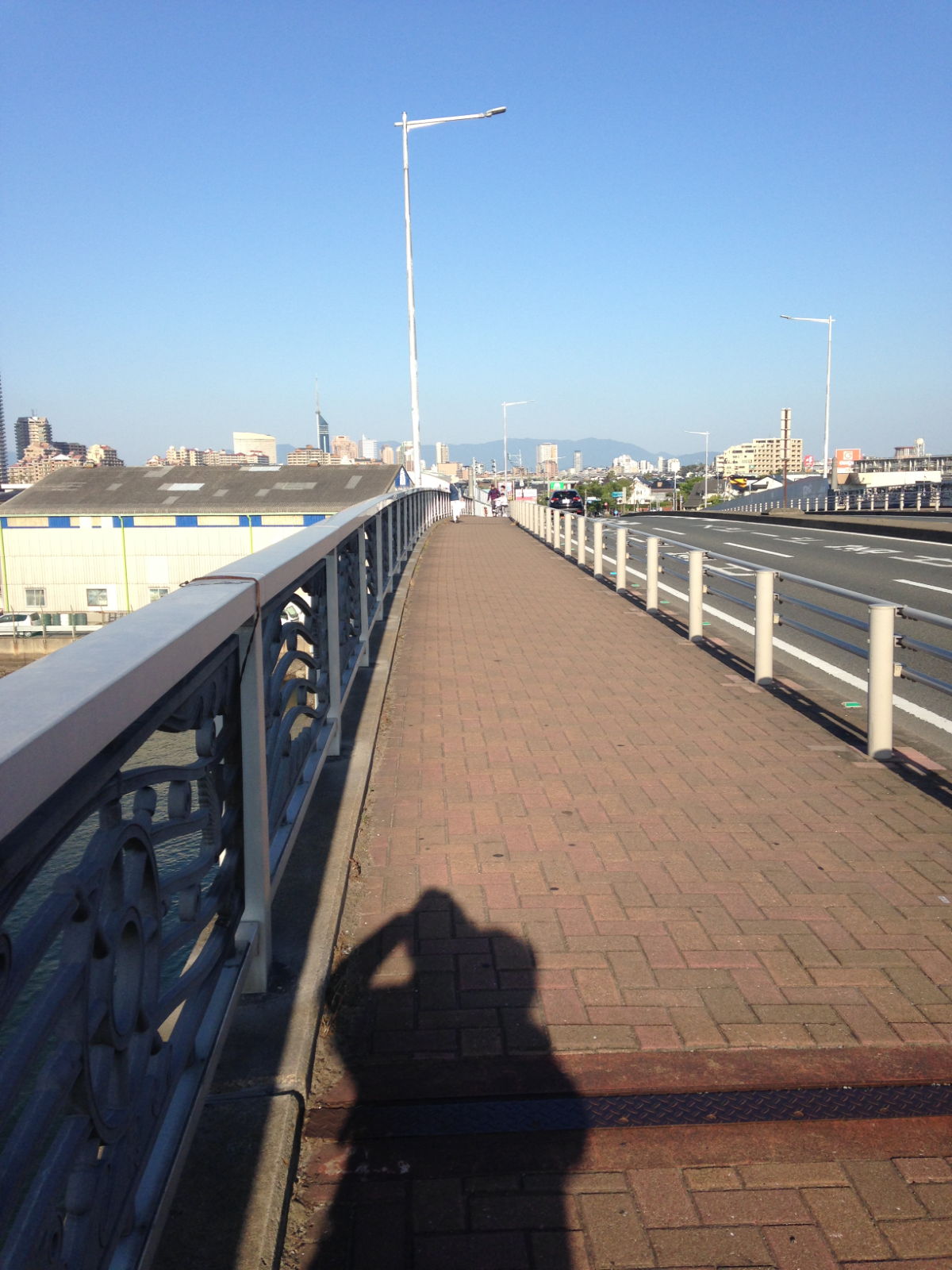
The beach held the fascinating sight of several family groups of cockle pickers working hard digging in the sand for their catch while the tide was out. The sun was setting when we reached the small resort at the end of a pretty waterside walk and we had a drink in the delightfully named Banana Bar before getting a taxi back to the boat.

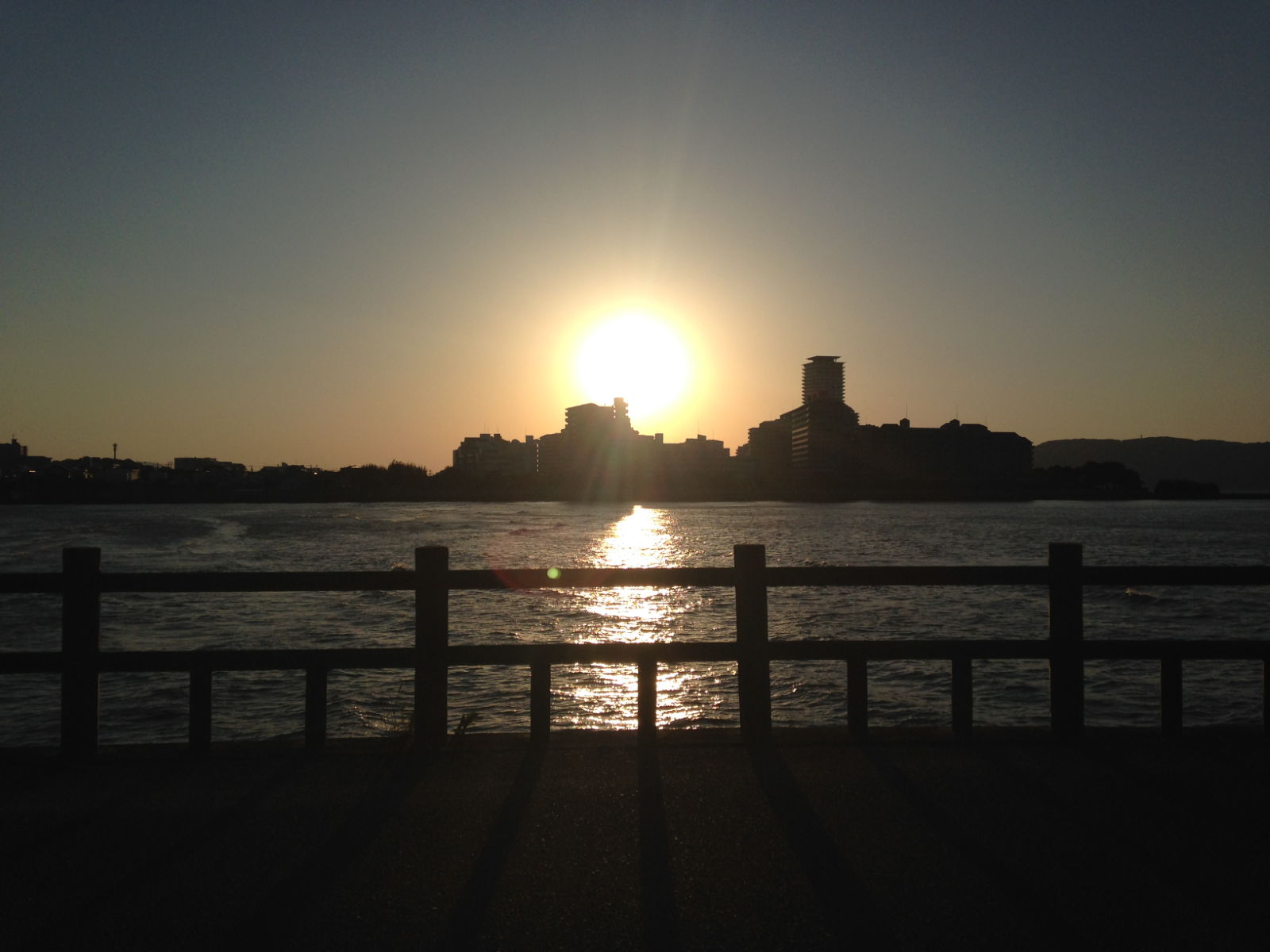

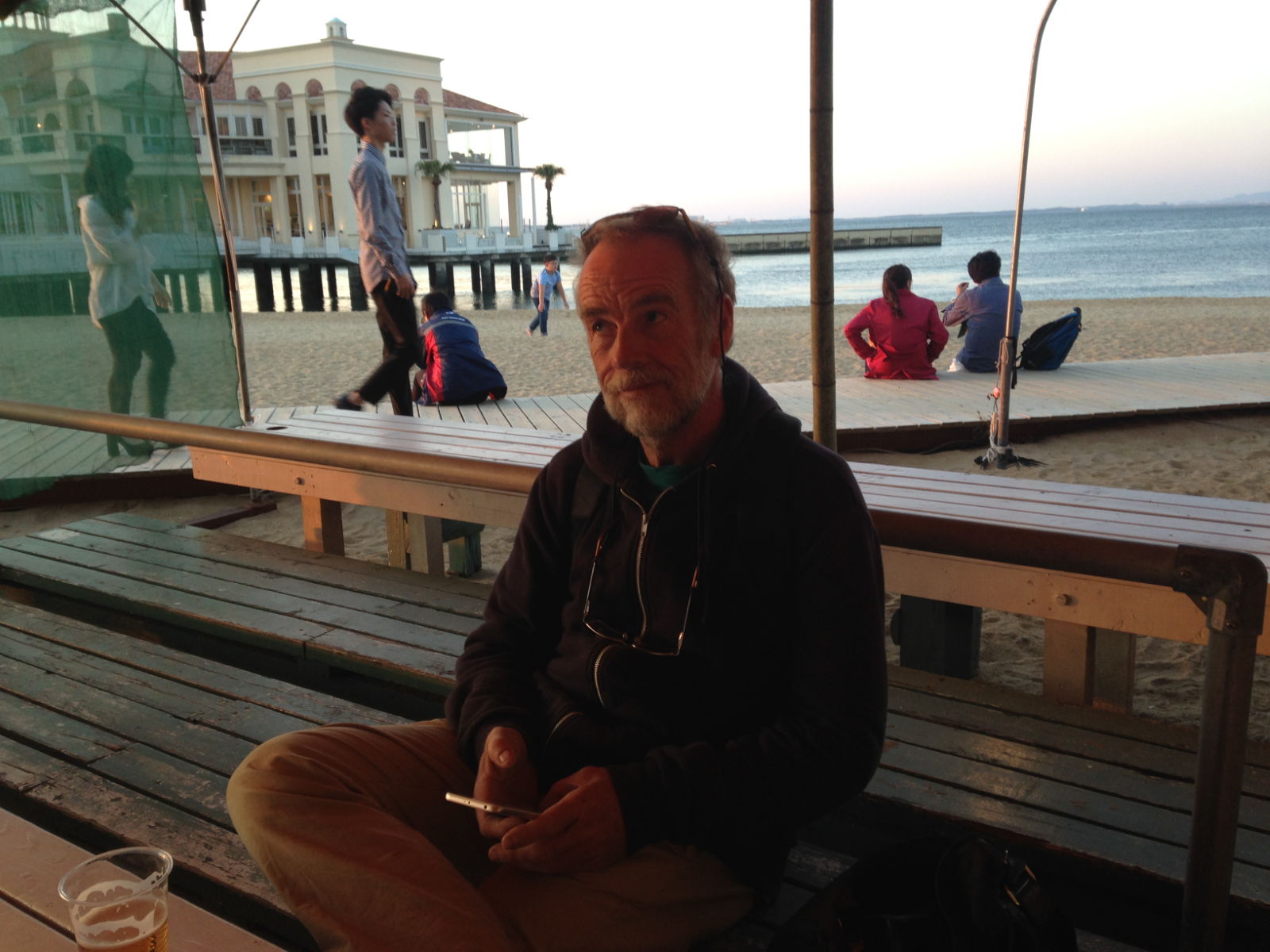
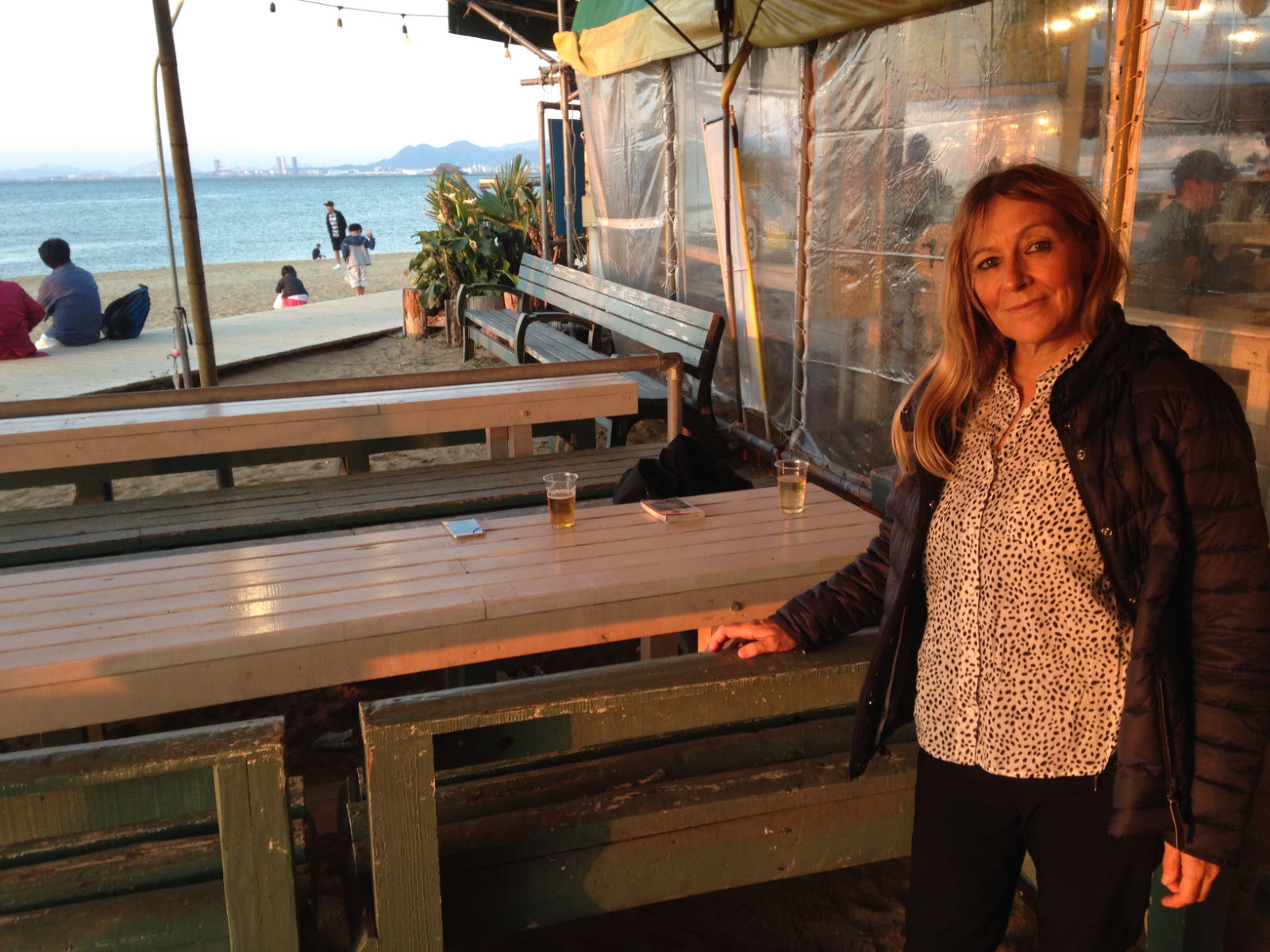
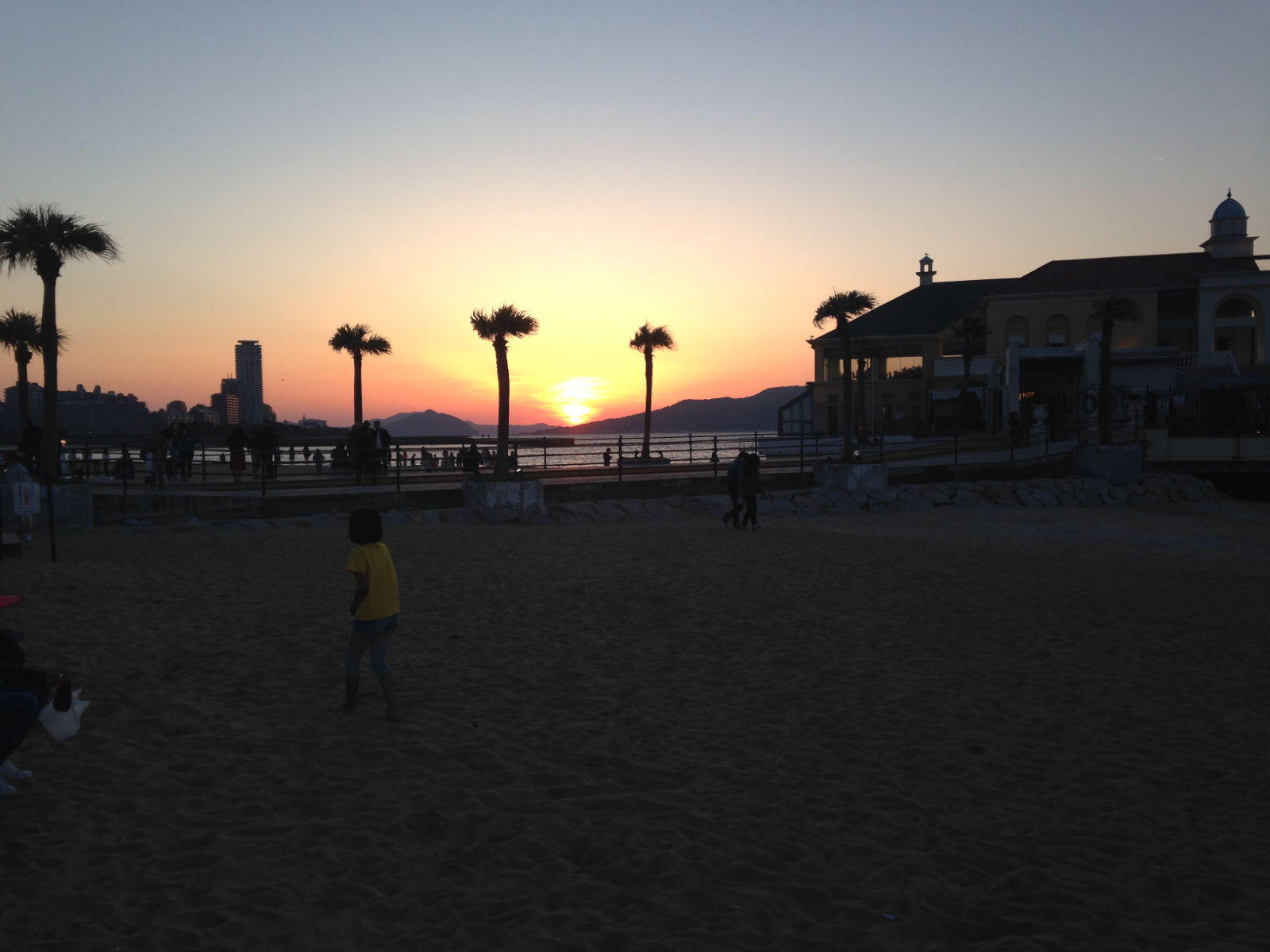
Before we left Fukuoka we bought a quilt for the bed; quite a change from the single sheet we’d got used to lying under in Malaysia and the Philippines but the nights were feeling decidedly chilly and layers of blankets proved to be fiddly and inadequate. It was a triumph to find one actually because most of the beds in Japan are single, so the majority of bedding on sale tends to caters for them. It was hard to leave the warmth of that quilt the next morning, especially as it was such an early departure to the Kanmon Strait. There would be no more night passages on this last part of the journey to the start of the rally.
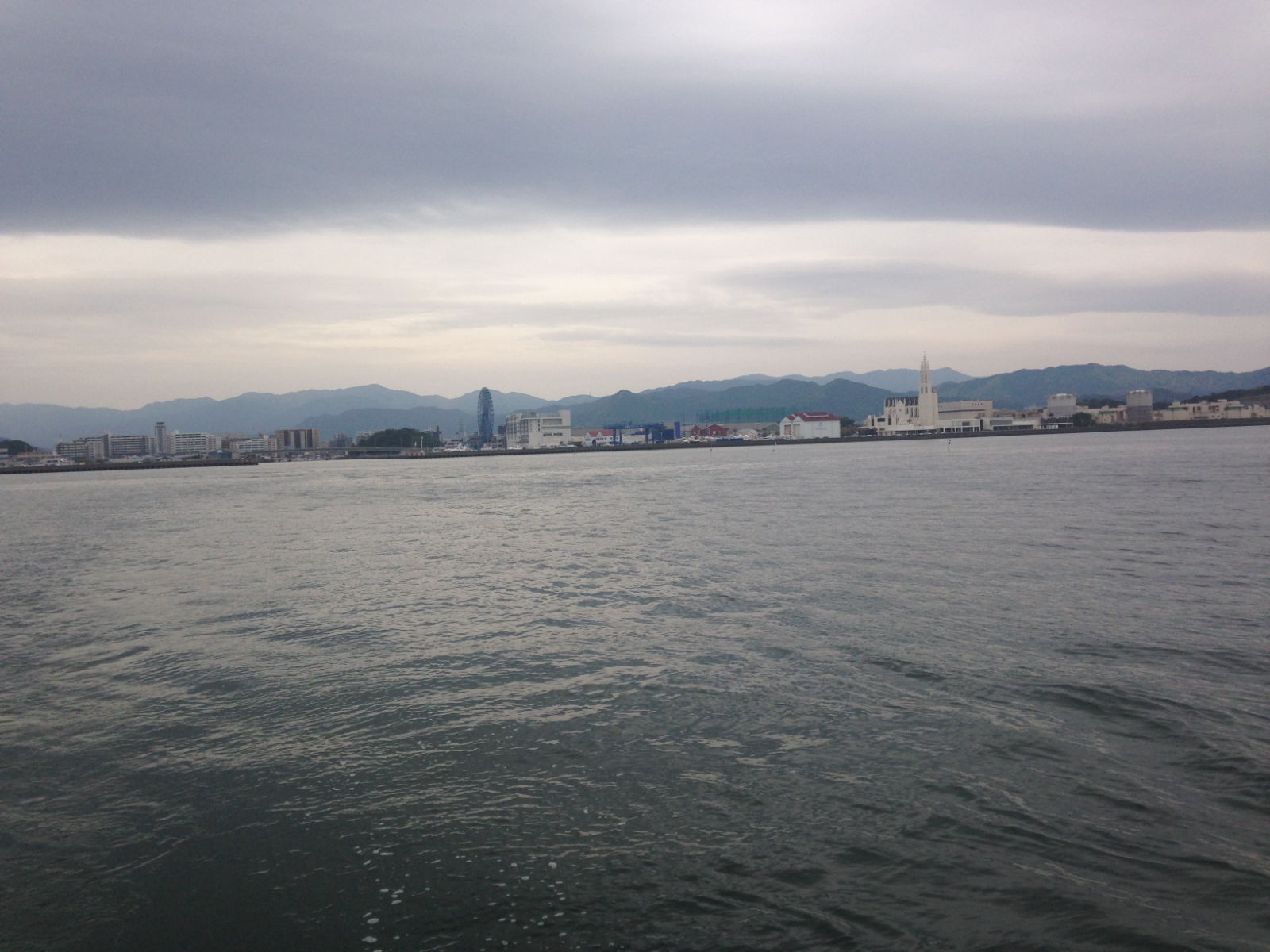
Back at sea, the rain fell again and visibility was just two miles, if that. It was also very cold, and Paul felt constantly chilled due to his faulty weatherproof jacket.

We anchored at the industrial town of Kitakyushu at dusk in driving rain. Smoke was coming from factories, there was low cloud, fog, a grey rough sea and an icy wind. I couldn’t help remarking that it was like Armageddon. Apparently this area was the intended target in August 1945 for the second atomic bomb, but smoke from the factories created a literal smokescreen so it was dropped on nearby Nagasaki instead.
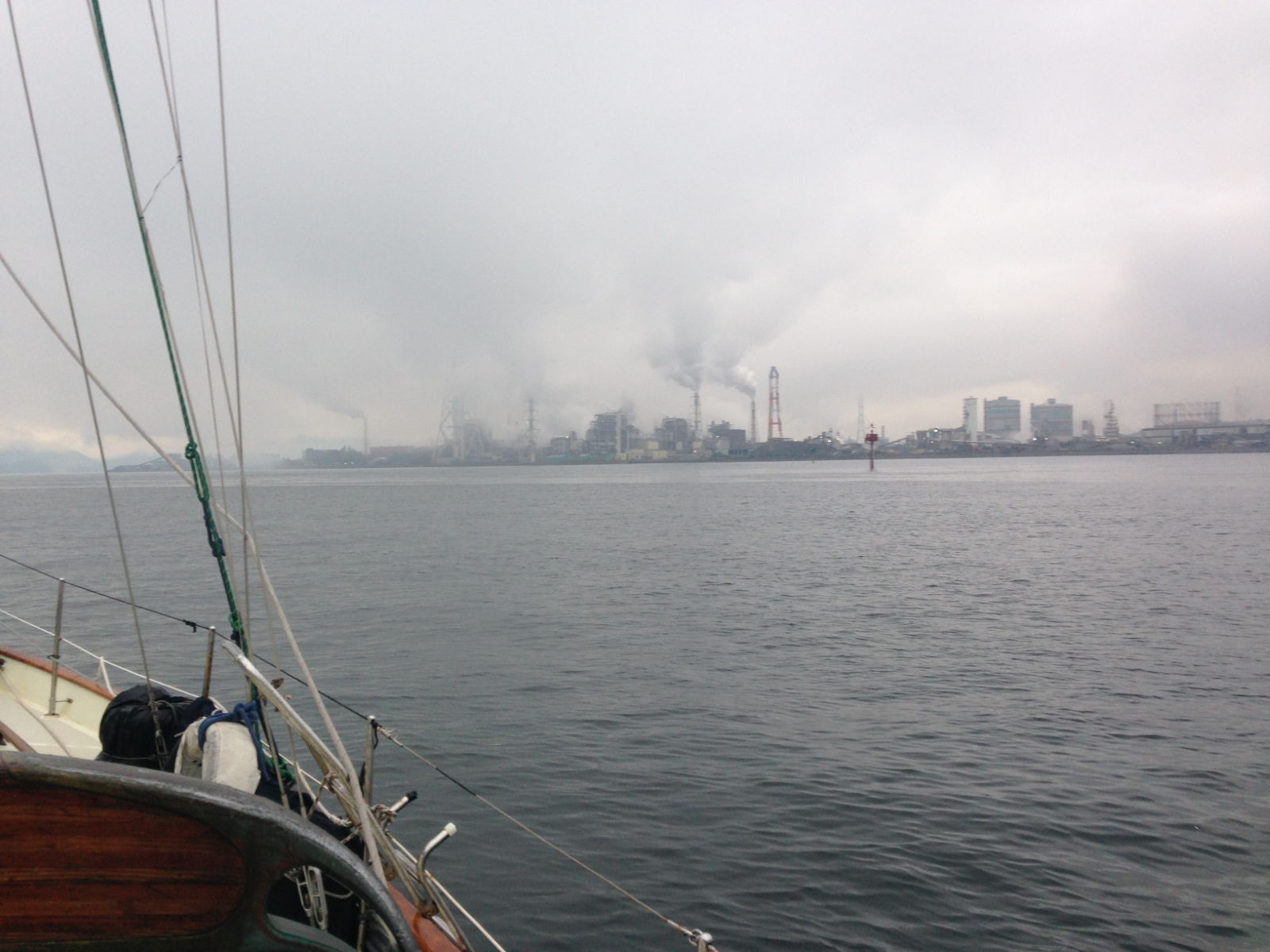
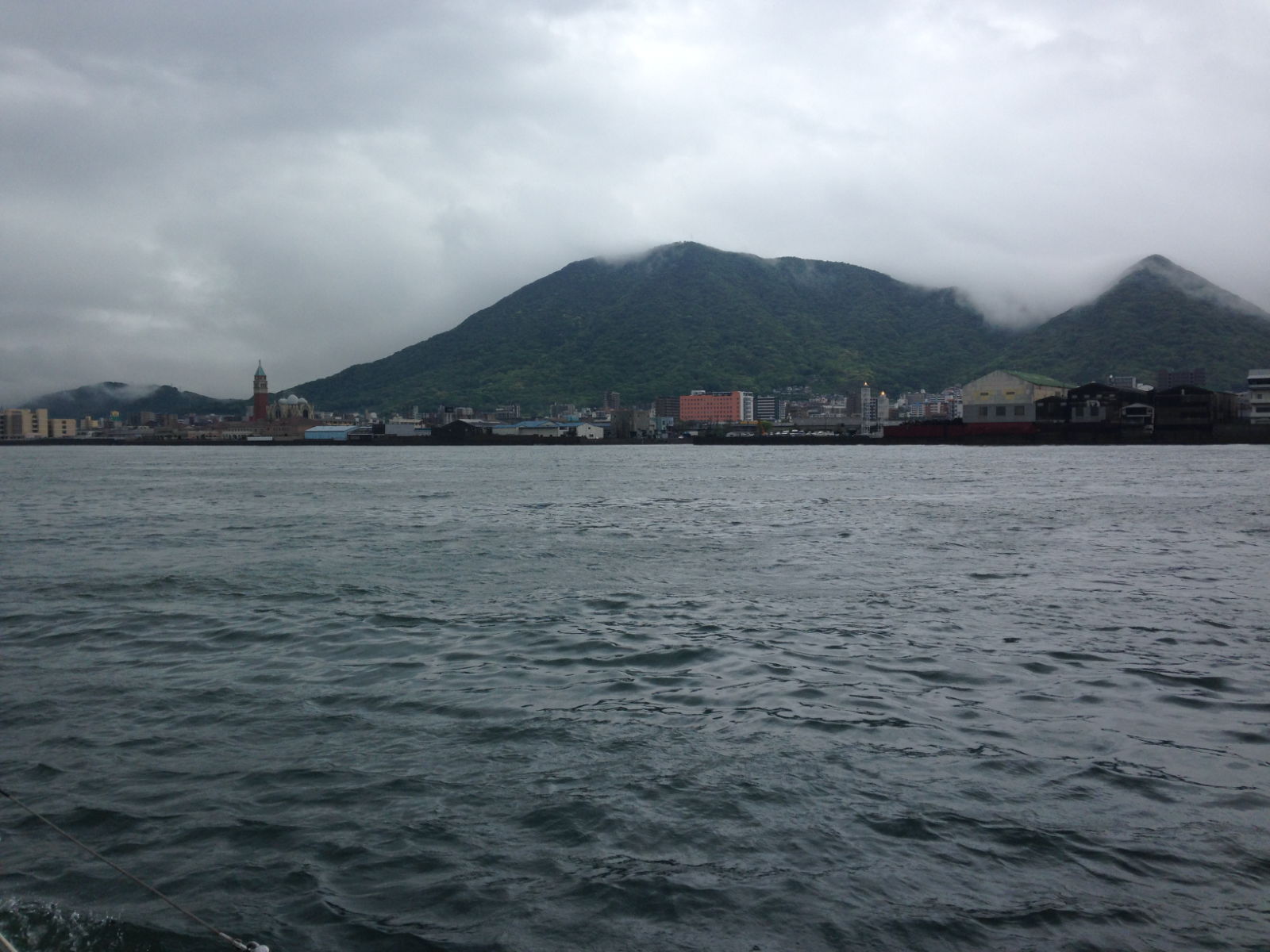
After a restful night at anchor the day presented more challenges in the form of bridges, fog, turbulent narrow channels, buoys, and boats coming out of docks. It was all strategically planned for however and my role was to monitor the AIS screen for vessels heading towards us. Doing all this meant I became more familiar with the symbols and signs on the screens. It’s certainly worth its weight in gold in terms of navigation, and so interesting to watch.
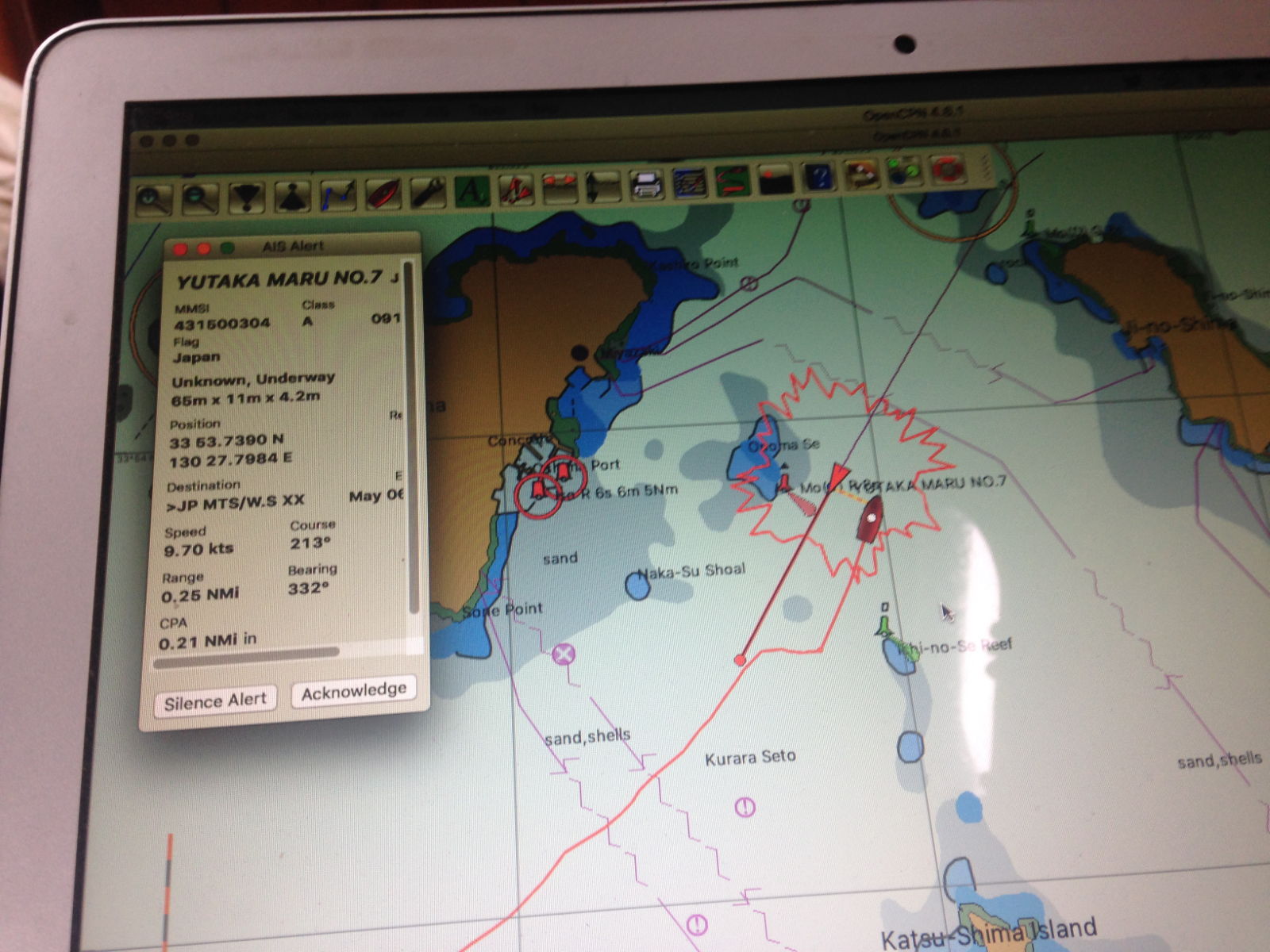
Near our next anchorage, at Nakatsu we had marker buoys galore to watch out for while a fine, drizzly rain fell. We anchored at 2 30pm in a sheltered harbour lined with industrial buildings, piles of sand and heaps of gravel. As it was still early in the day we got on with a few jobs, the most essential of which was fitting the new starter car battery Paul had bought in Fukuoka, which served as a temporary measure until brand new ones could be bought and fitted.
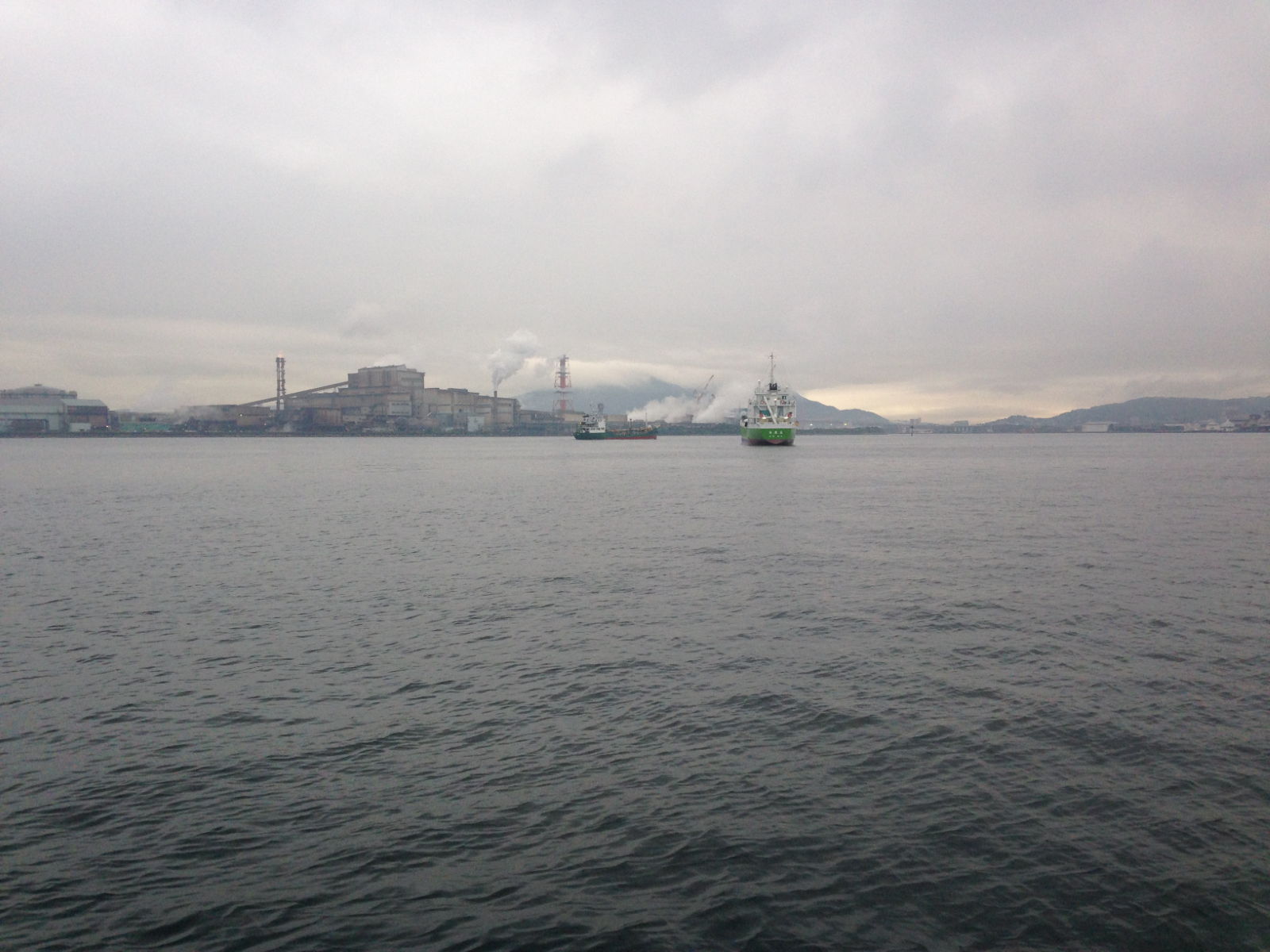
More dreary weather the next day on our passage to Himeshima: looking out on the horizon in the milky white air it was difficult to determine where the sea ended and the sky began. It was a short hop in the drizzly rain to tie on to another wall at 12 30 just as the rain got heavier. The rain didn’t stop all day. Rather than sit inside, while a new place was waiting to be explored, we braved the conditions and went for a walk later in the afternoon.
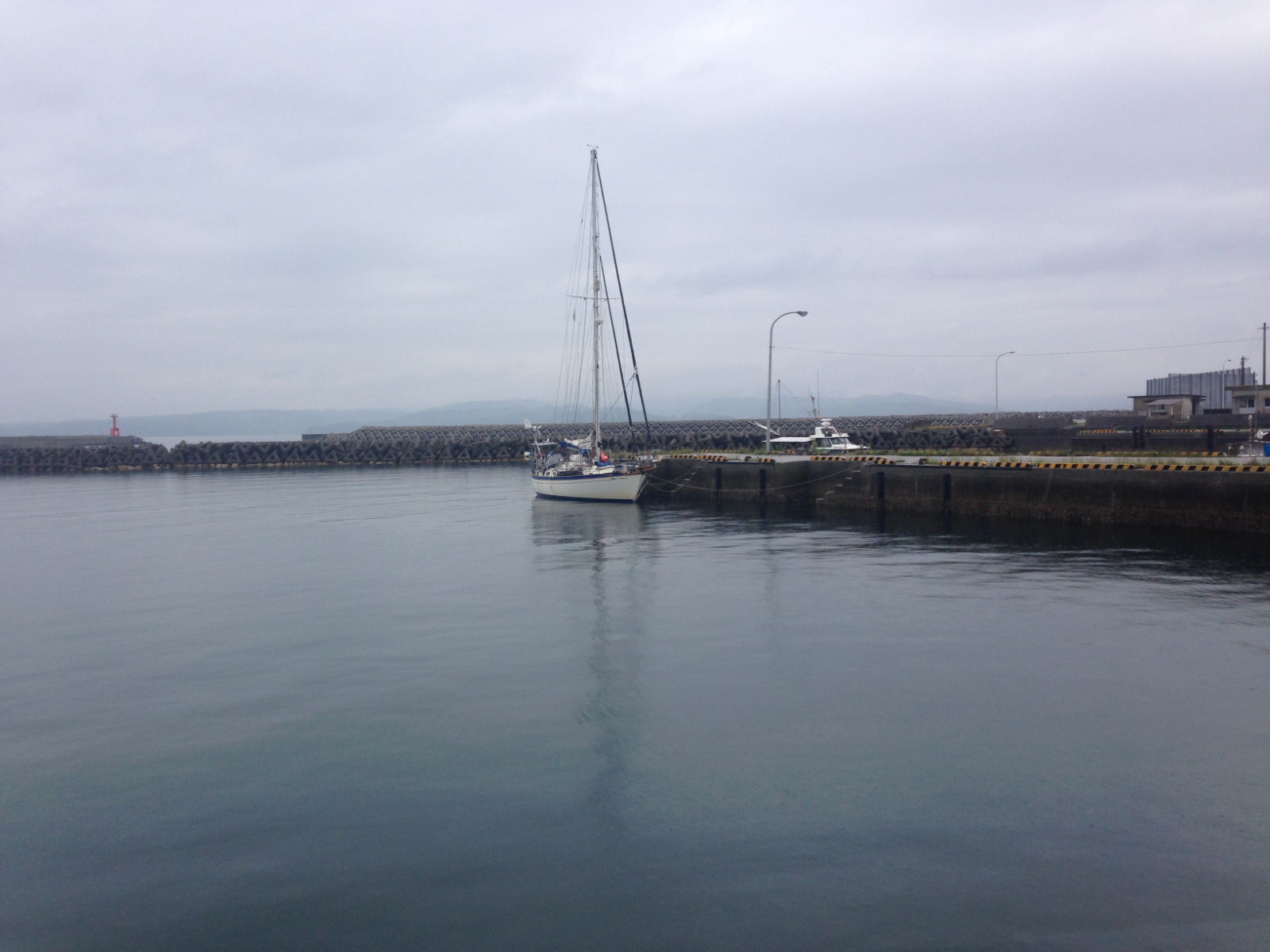
Once again the small town was empty of people. The few retail establishments and one café were closed but bizarrely, a tiny tourist information place was open. We went in and spoke with the very smiley young girl, who spoke a bit of English and enthused very enthusiastically at our answers to her questions. It would be easy to assume this was disingenuous but knowing the Japanese people now, this would be an incorrect assumption. Generally, they are sincerely interested in foreign visitors and not shy about showing it. There wasn’t much she could tell us or show us about Himeshima though – she did produce a quaint map for us which looked like she’d lovingly created it herself and we’ve added it to our treasured momentos.
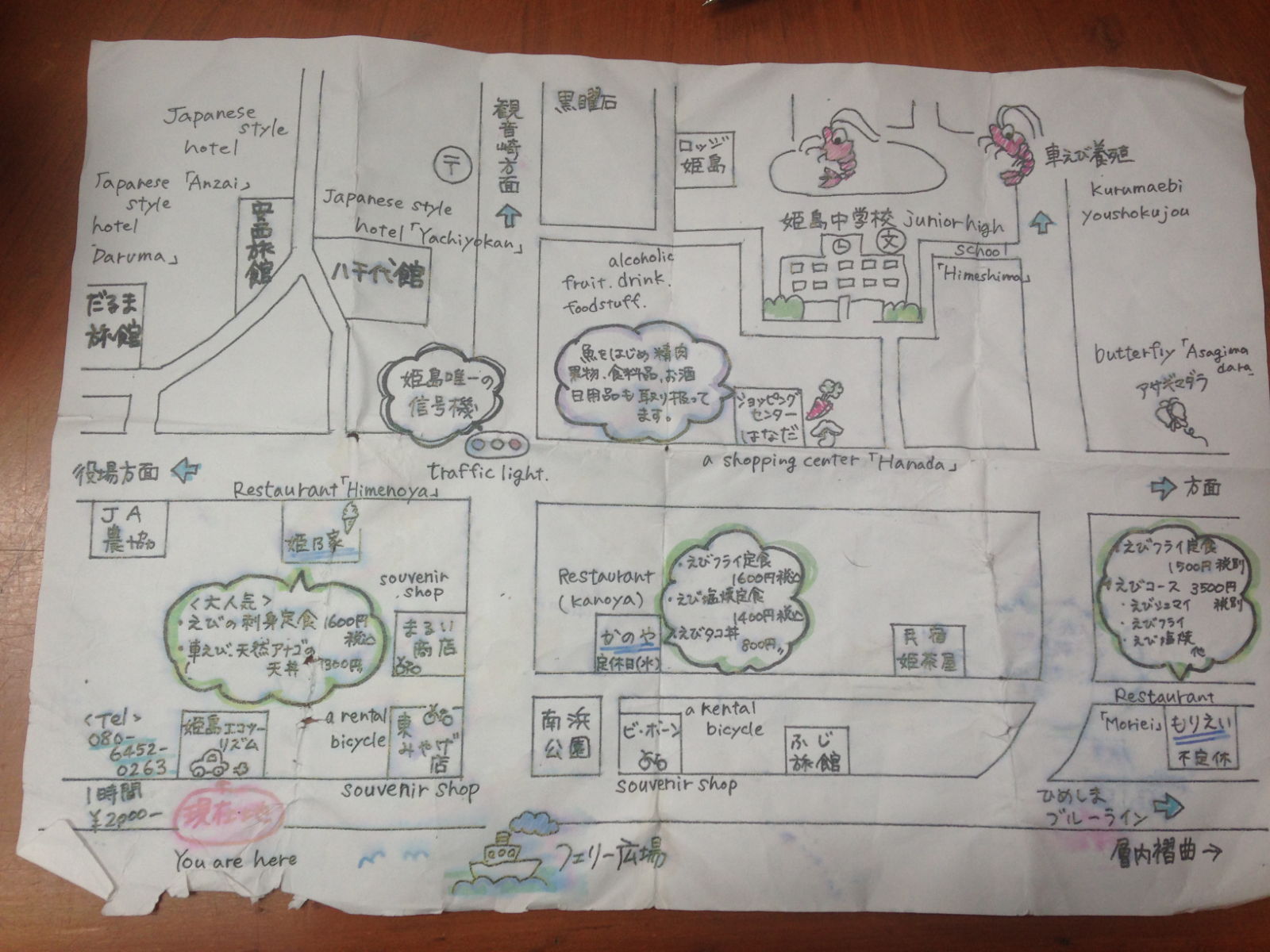
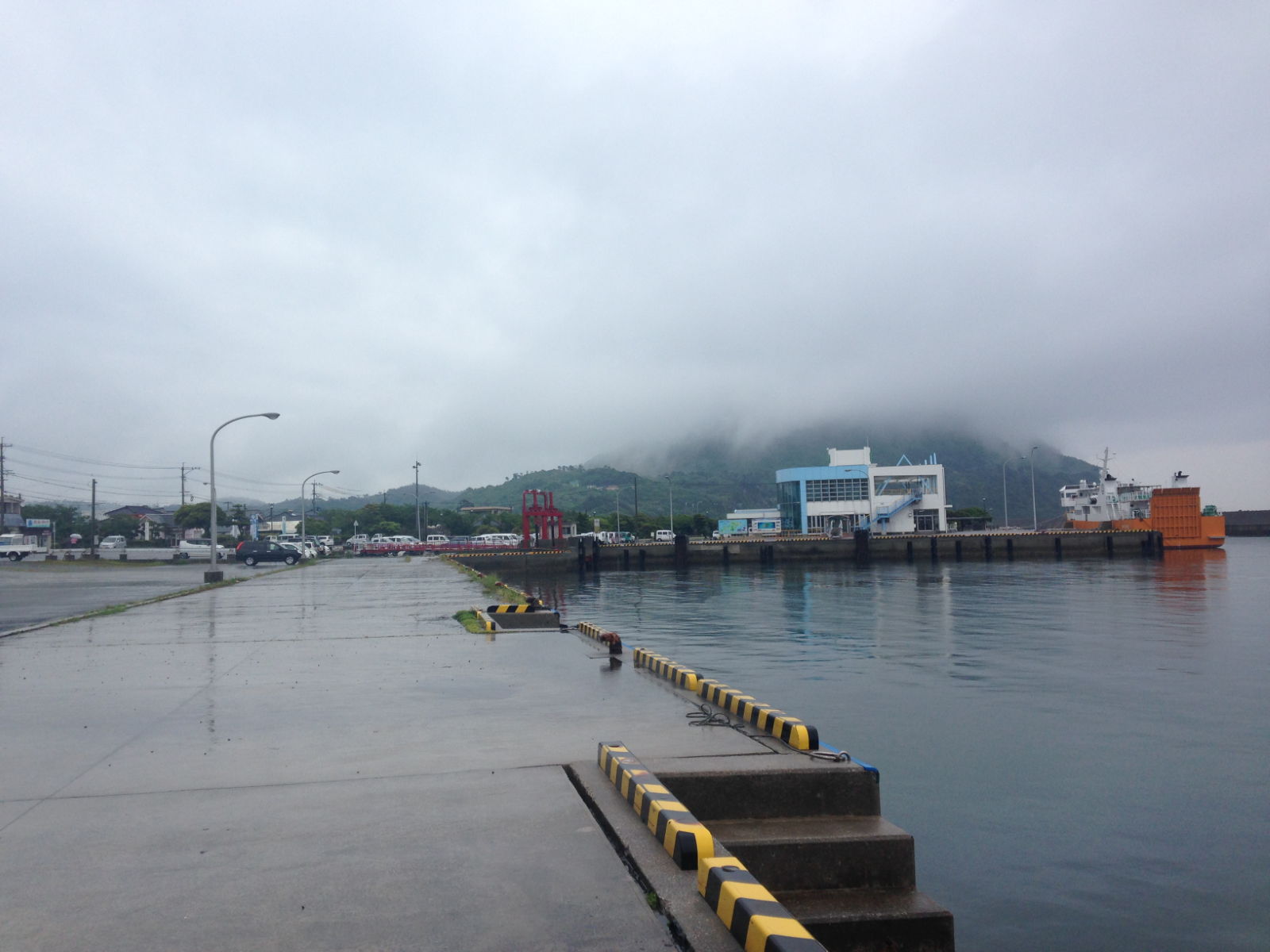
Our walk revealed a desolate, empty place, yet it was charmingly atmospheric with the weather creating an apt factor to the bleakness, and at least it lacked the smoky industry we’d viewed recently. The beach’s only visitors were black crows who contributed to the eeriness; their loud, repetitive caws breaking the silence. We saw less than a dozen people the entire time we were there, and that includes a visit to a supermarket. Despite this, a regular ferry service is in operation, but for the life of us we couldn’t work out the need for such a frequent service.
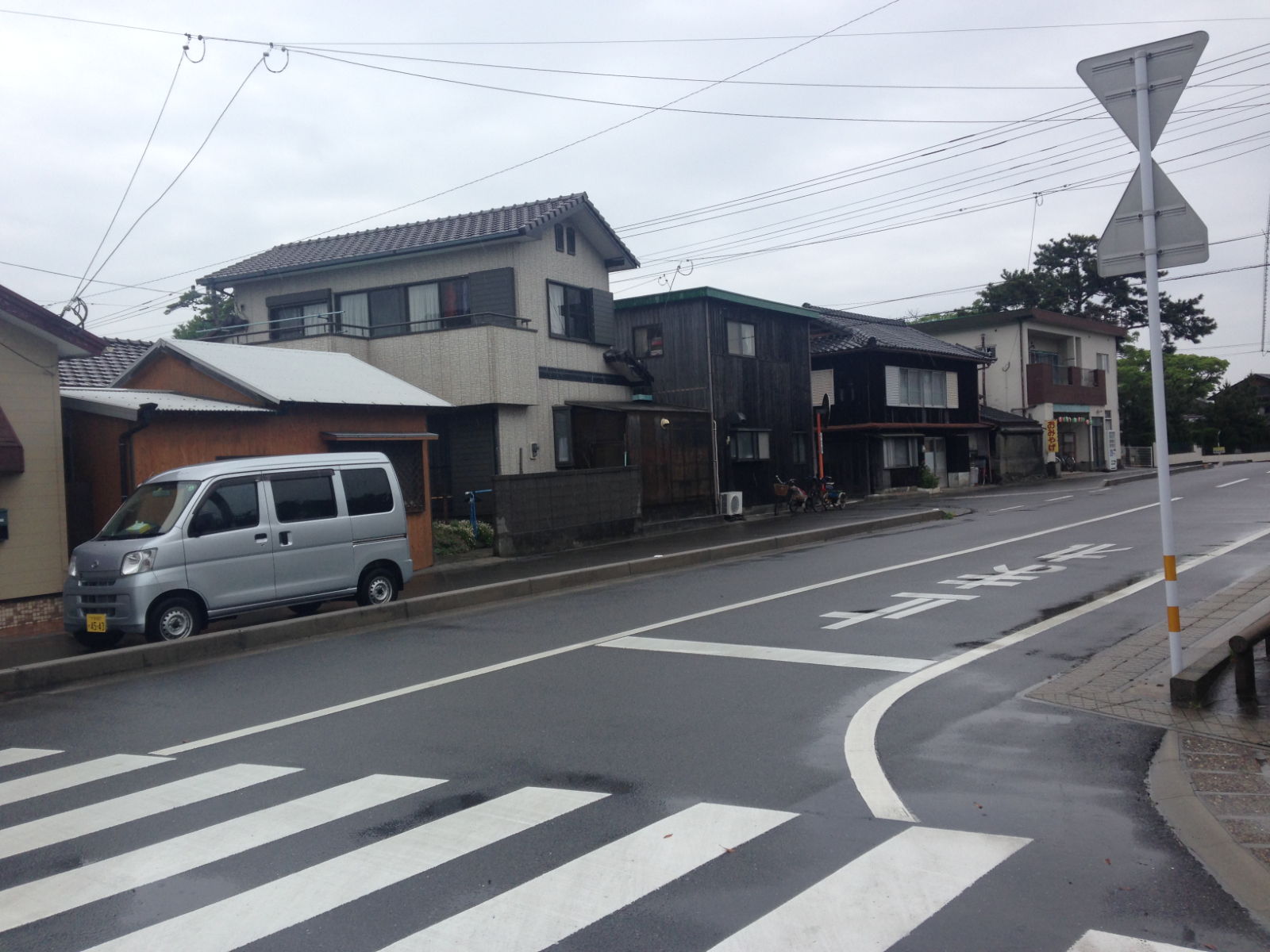
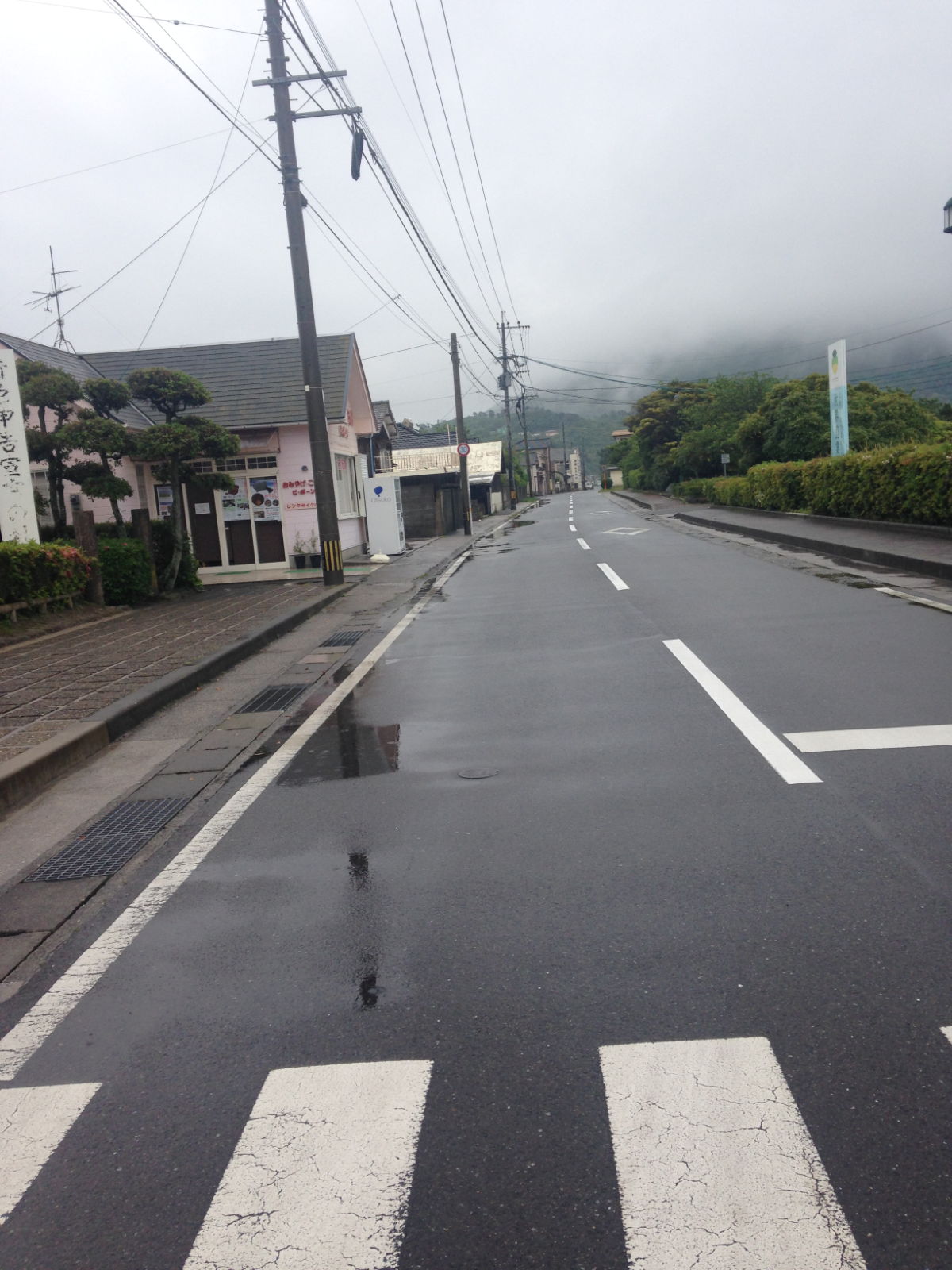
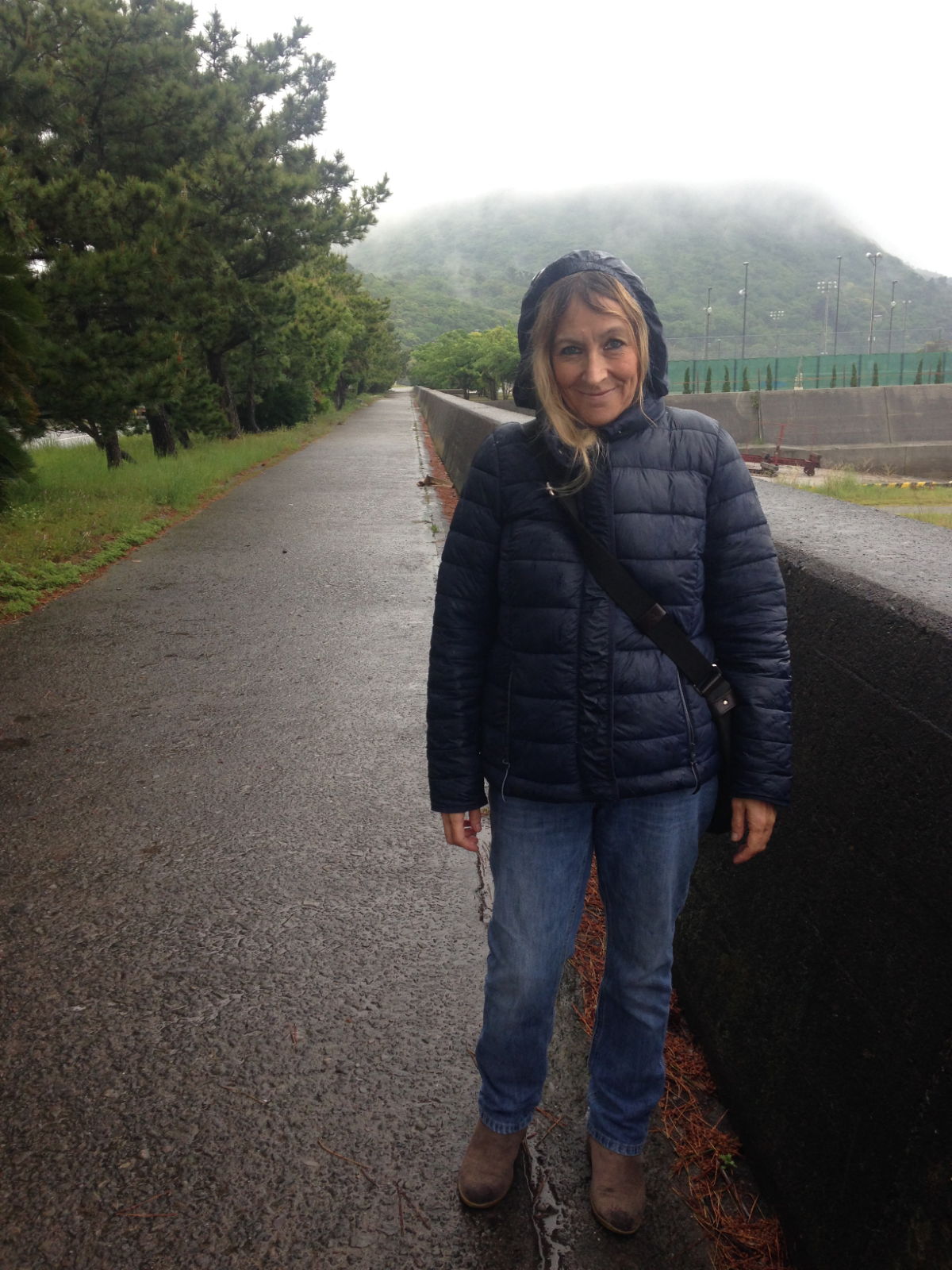
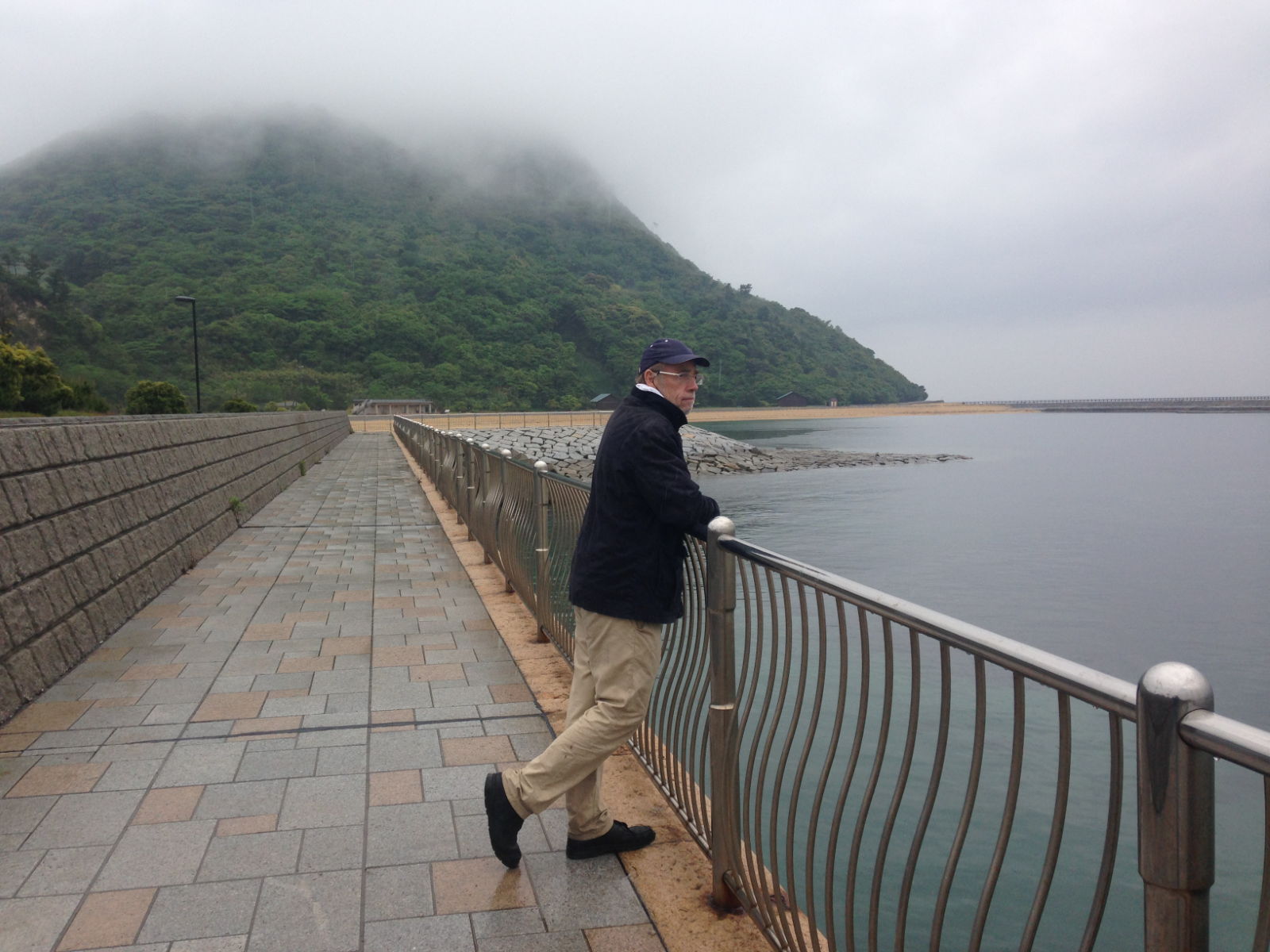



When Paul took us out early the next morning the weather had improved. It was bright, warm and clear. He said Himeshima looked picturesque in the early sunlight but I prefer to remember its brooding and silent emptiness. We had entered the Seto inland sea; the region from which the rally we were joining takes its name – Setouchi. We were also close to another World War 2 scene of devastation – Hiroshima. Again, we had to bypass a visit much to my disappointment. Despite the early sun and the blue sky the day was chilly and I was glad of my thermals. Our anchorage, at a place called Matsuyama was a pleasant and secure spot but the peace was interrupted by a crow scaring device which delivered loud gunshot sounds at two-minute intervals. Even though I knew they were coming I still jumped at each one. Thankfully they stopped at sunset. We were treated to a smack (yes, that’s the collective noun for them) of jellyfish looking for all the world like they were doing a synchronised dance around the boat, so graceful are they in their movements.
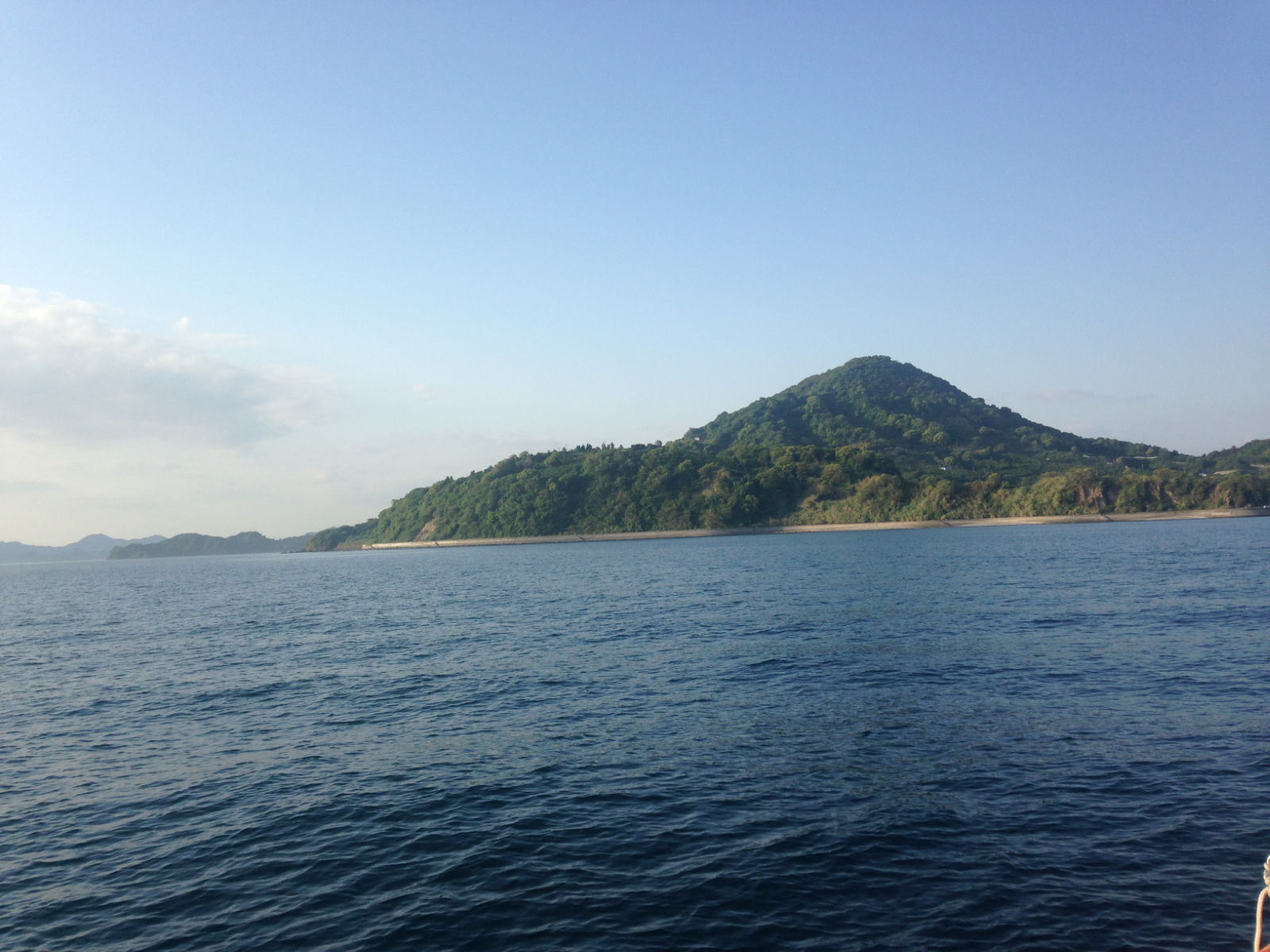
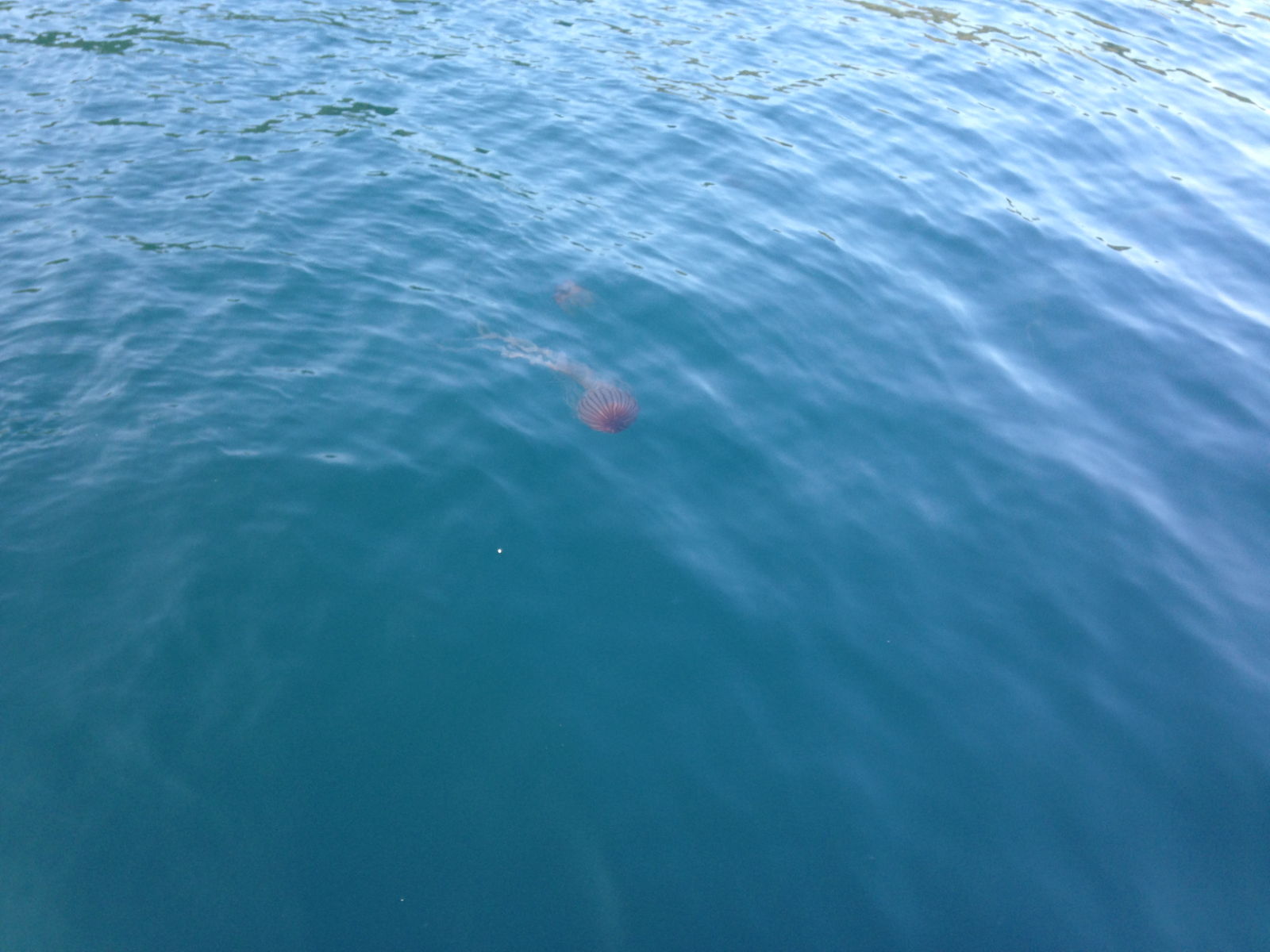
Now we were only one day away from the start point of the rally, and all the hurrying could stop for a while. We approached a major bridge we had to go under and got told off by the bridge controller. We should have got prior permission, he told Paul on the VHF. He instructed us to follow the path of the huge cargo ship in front of us and then called again a few minutes later to tell us to speed up! Rules state that vessels must not do less than 4 knots, which is what we were doing. I was annoyed because Paul had to keep going down to speak to him and I had to take over the steering in tricky places, like rapids for instance, and could easily have caused more of a problem than slow speed. The second bridge was a bit more nerve-wracking. Paul had done the sums about the mast height and the bridge height but as we got closer, the familiar doubt that we could fit comfortably underneath it got both of us. It really is most disconcerting.

It was a lovely sunny afternoon by the time we reached our berth at the sea station at Yuge, and we were warmly welcomed by the rally organiser and some of the other participants. Our race to get there was over. The new challenges for me would be quite different in the weeks to come.
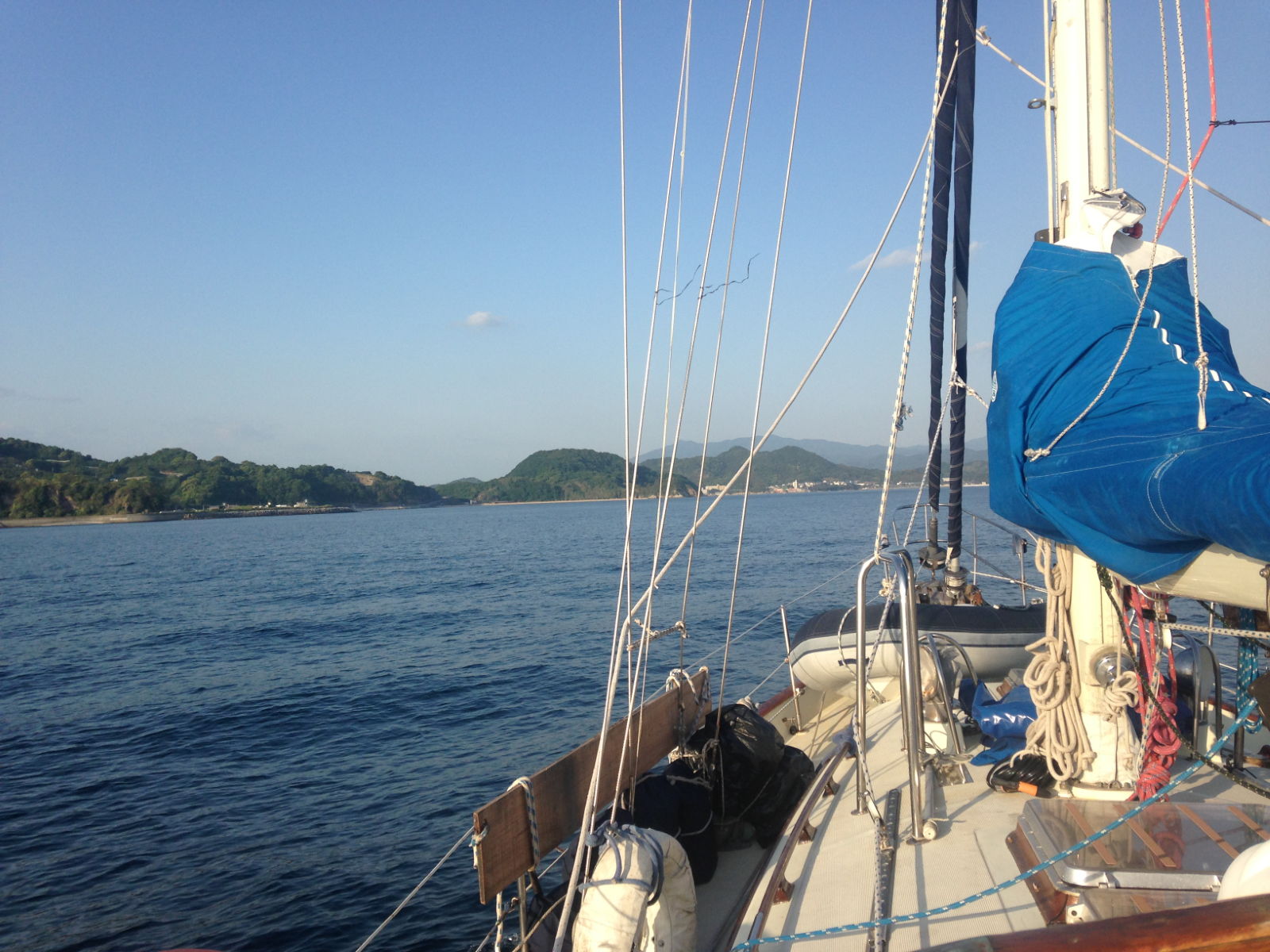
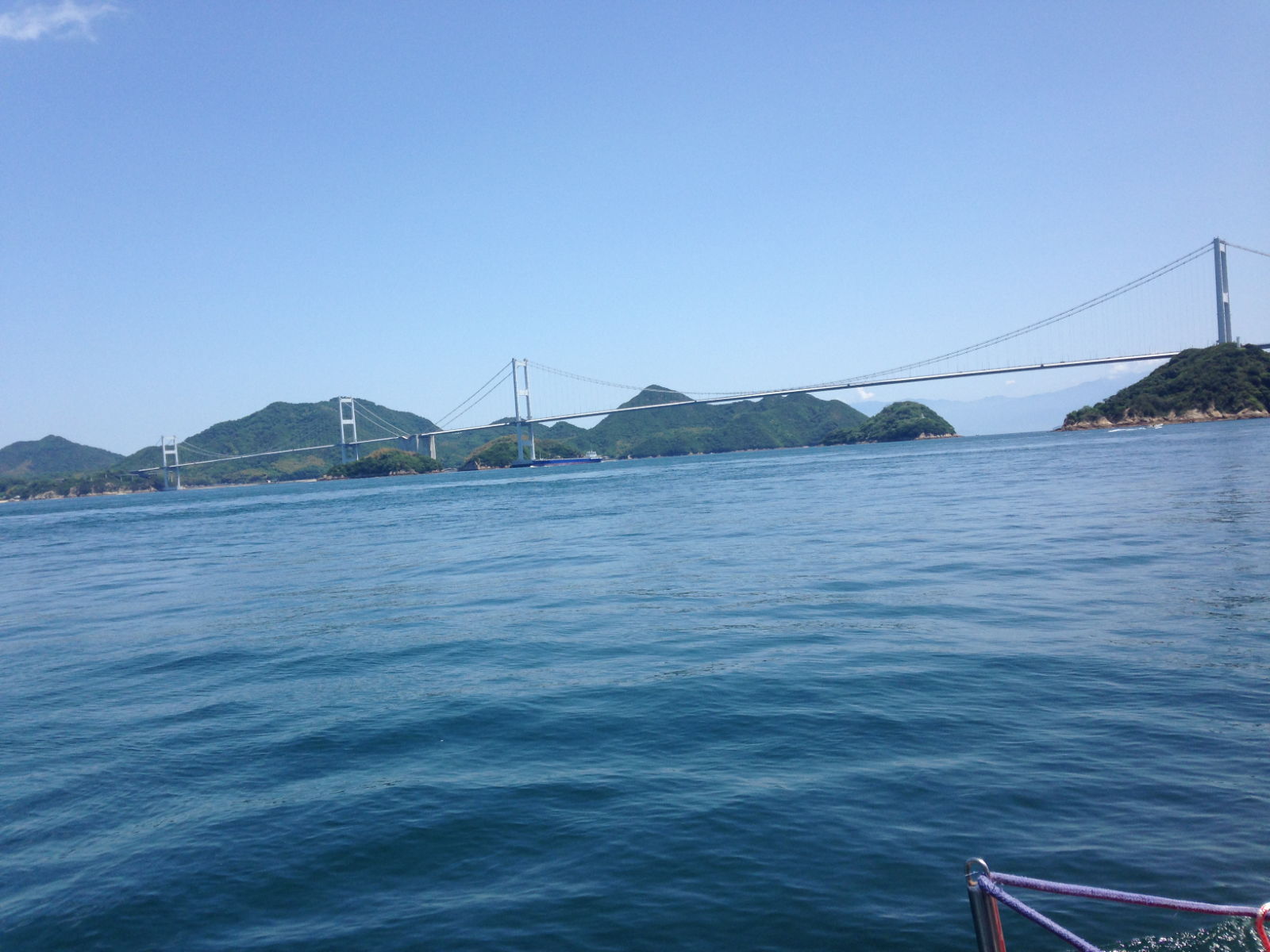

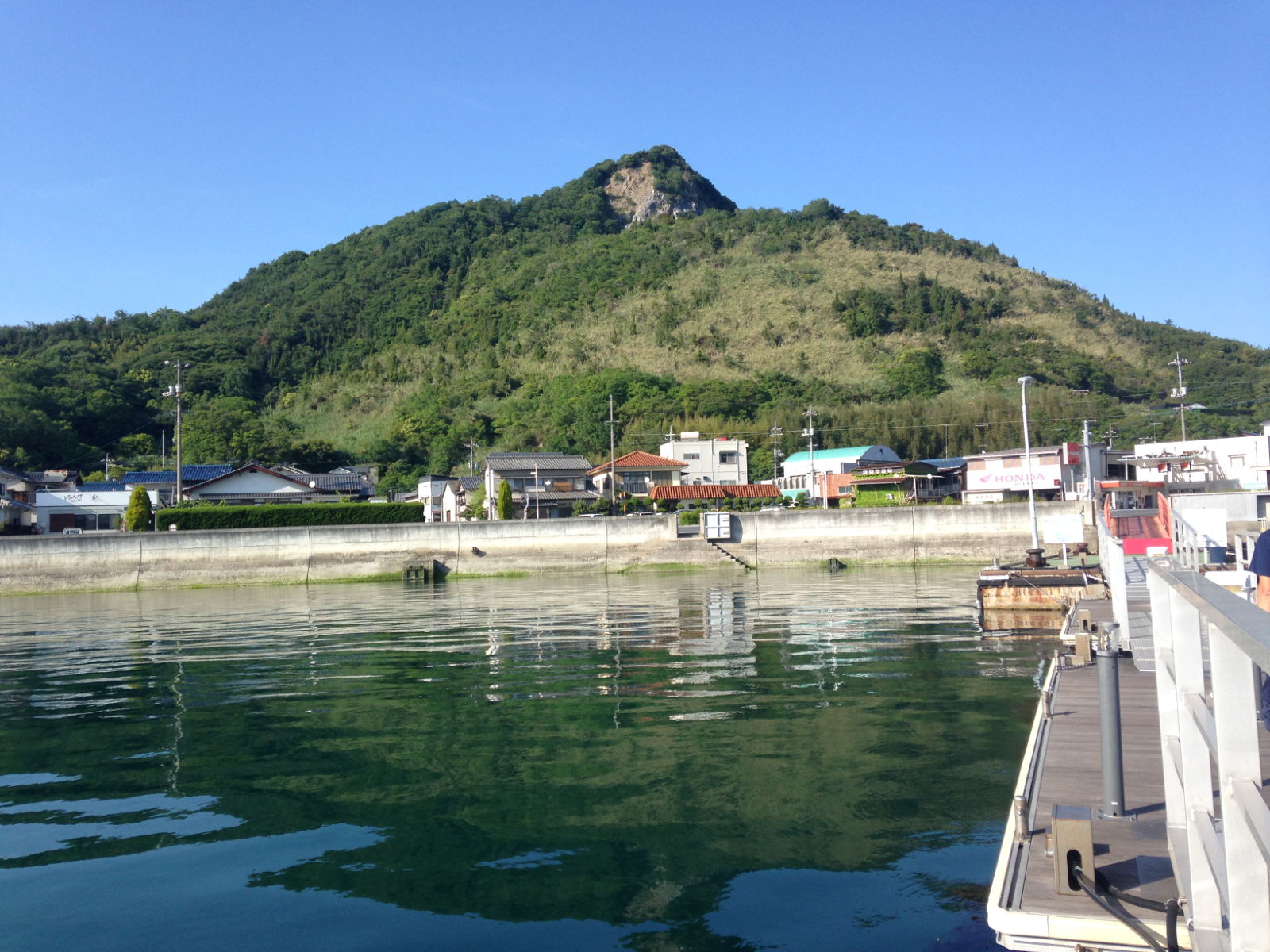
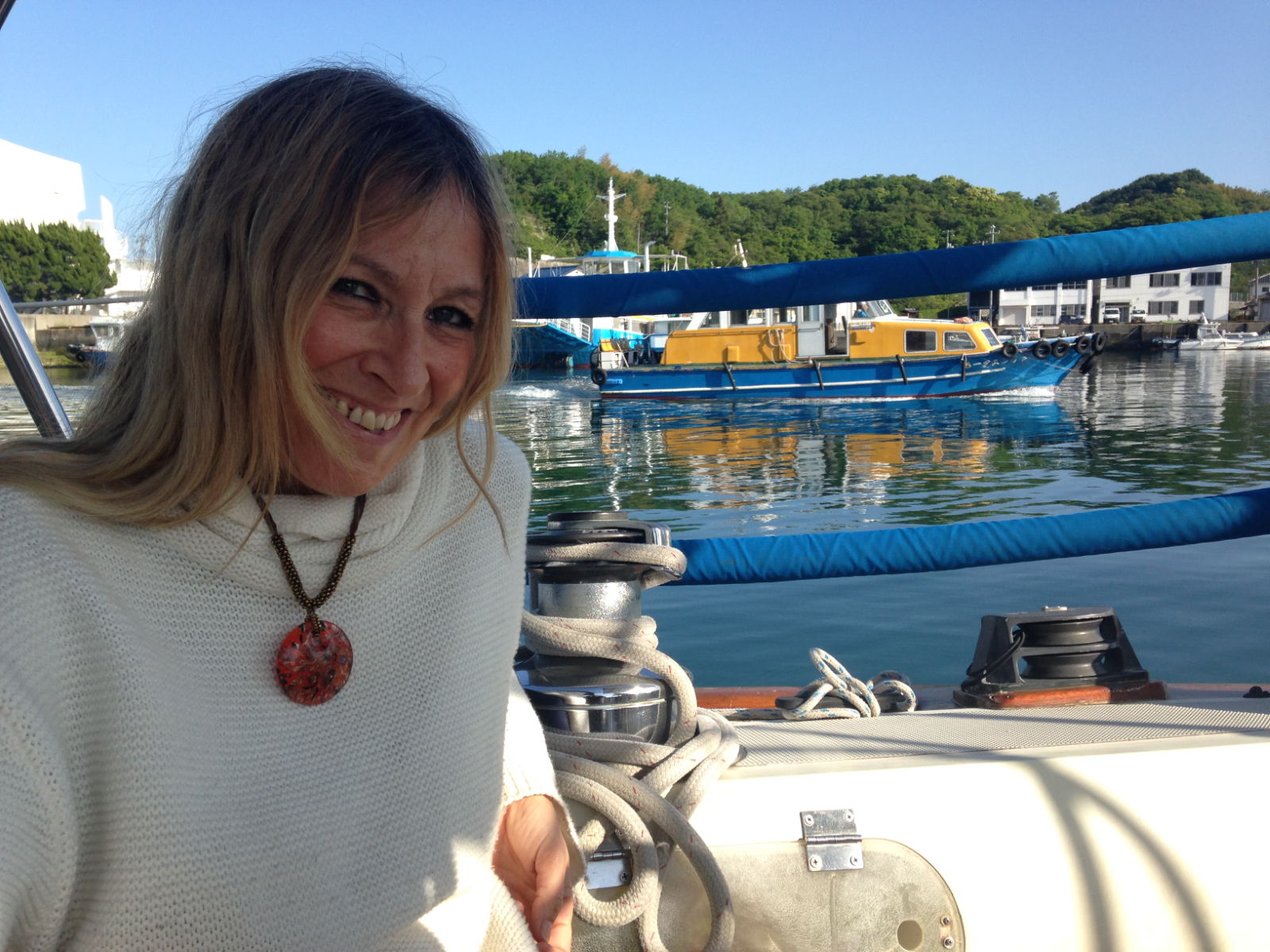
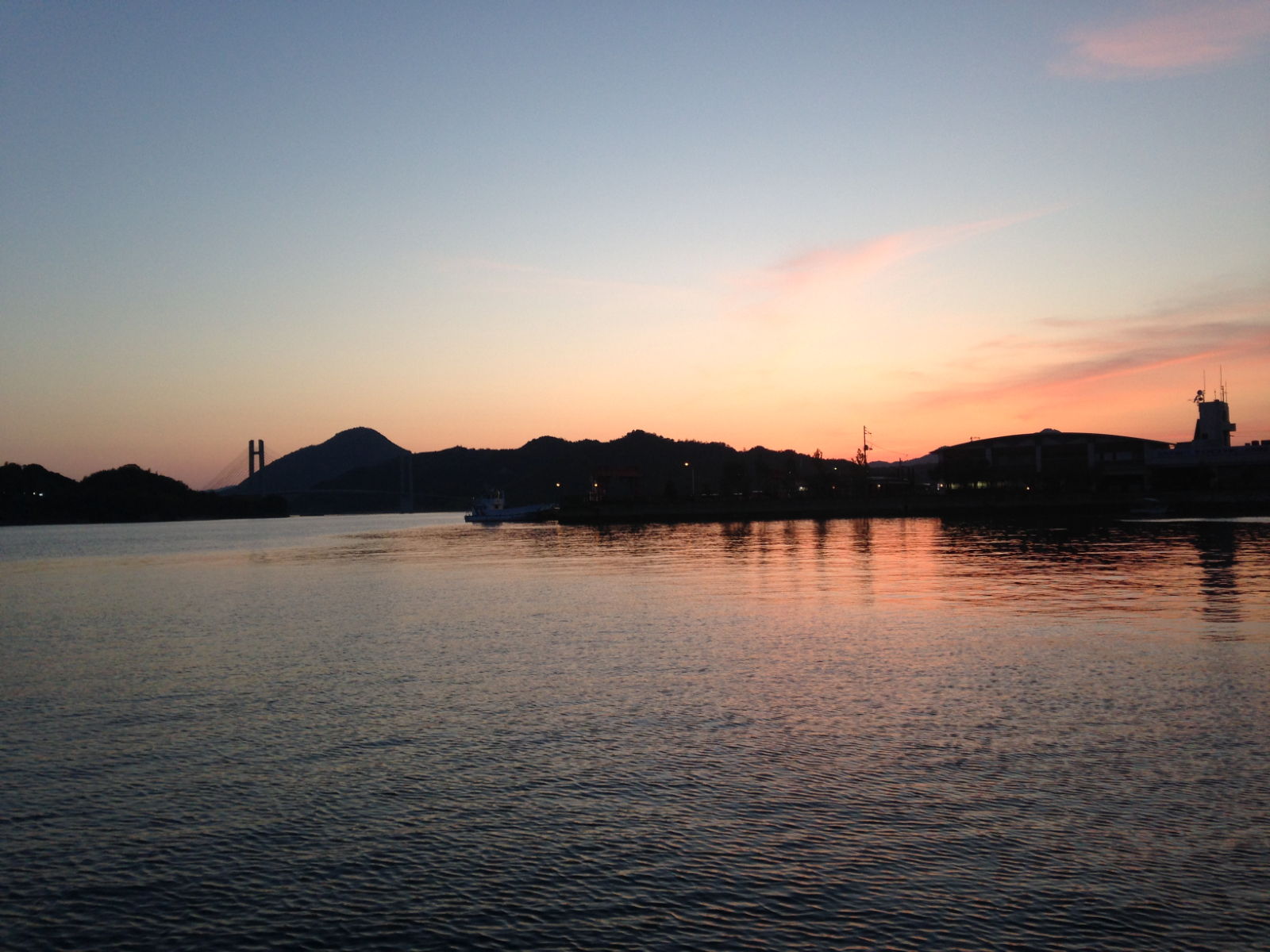
Kathy
